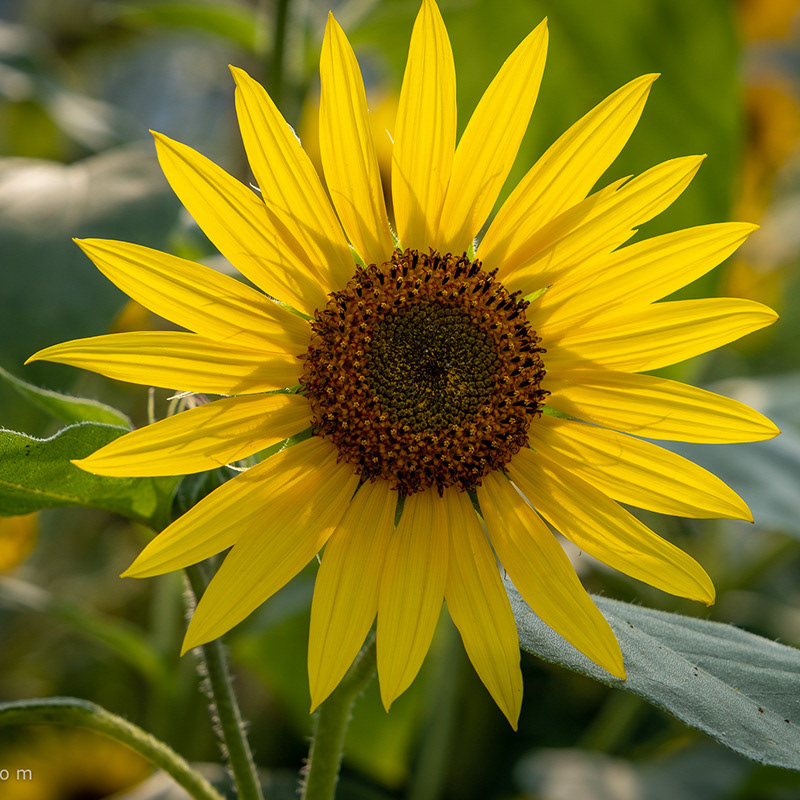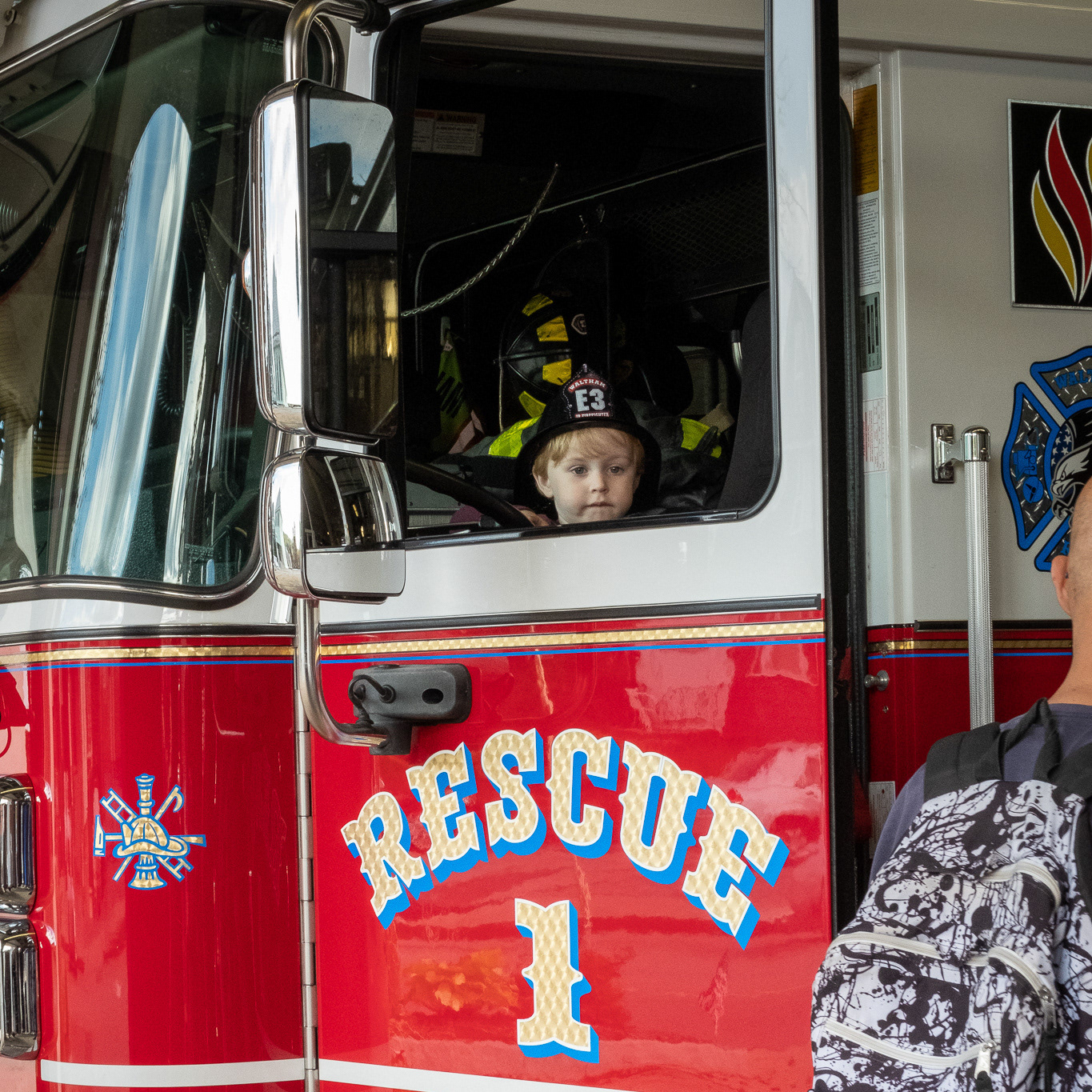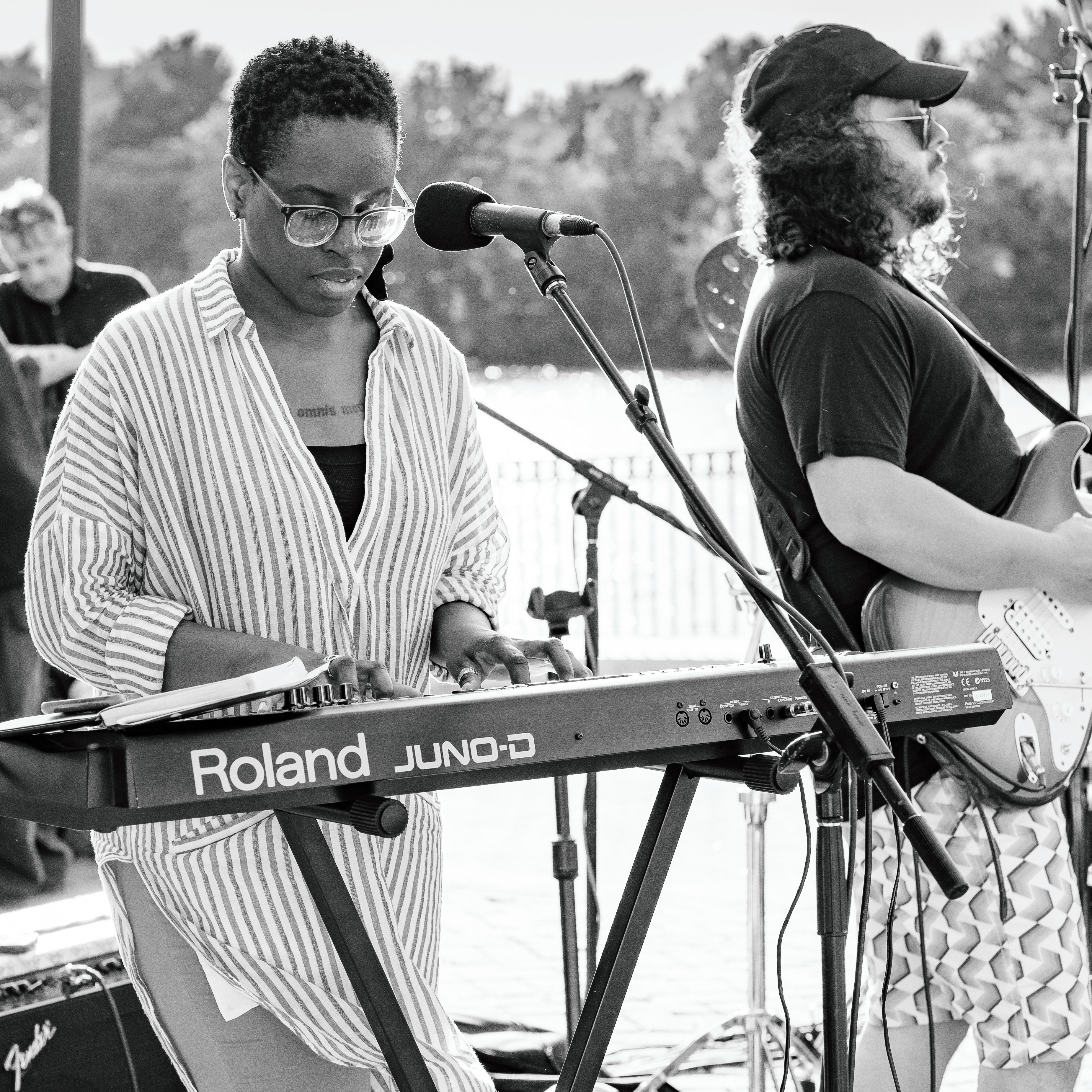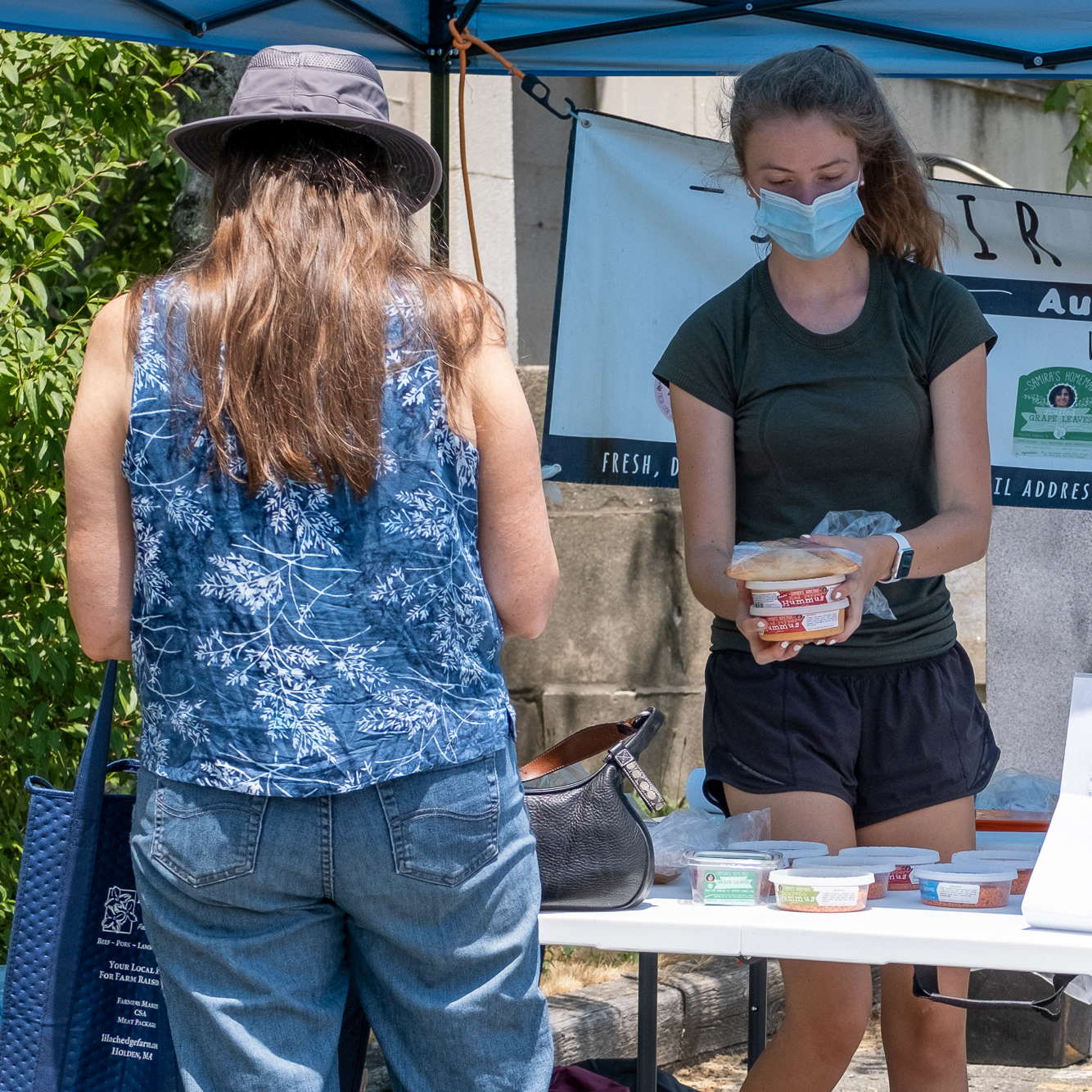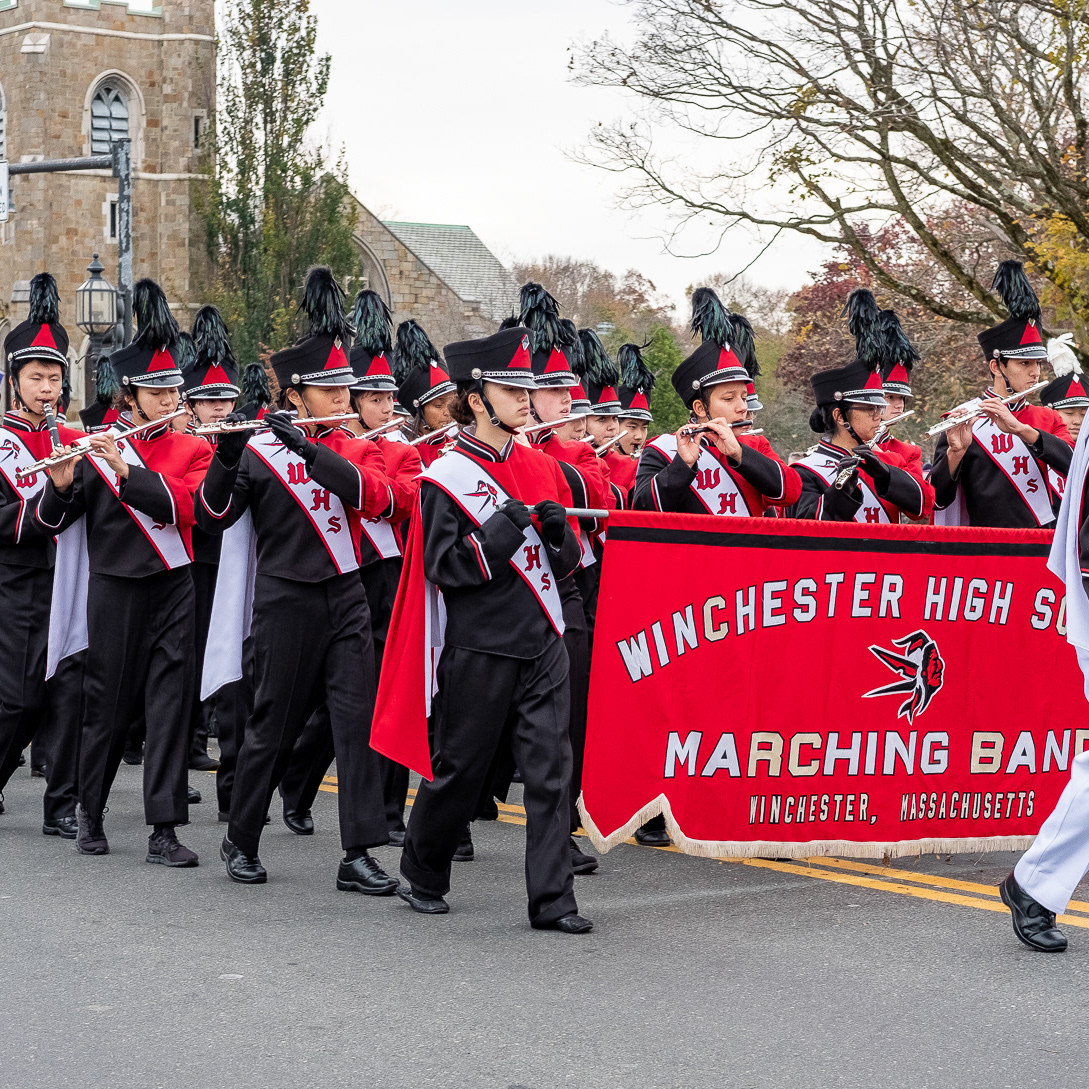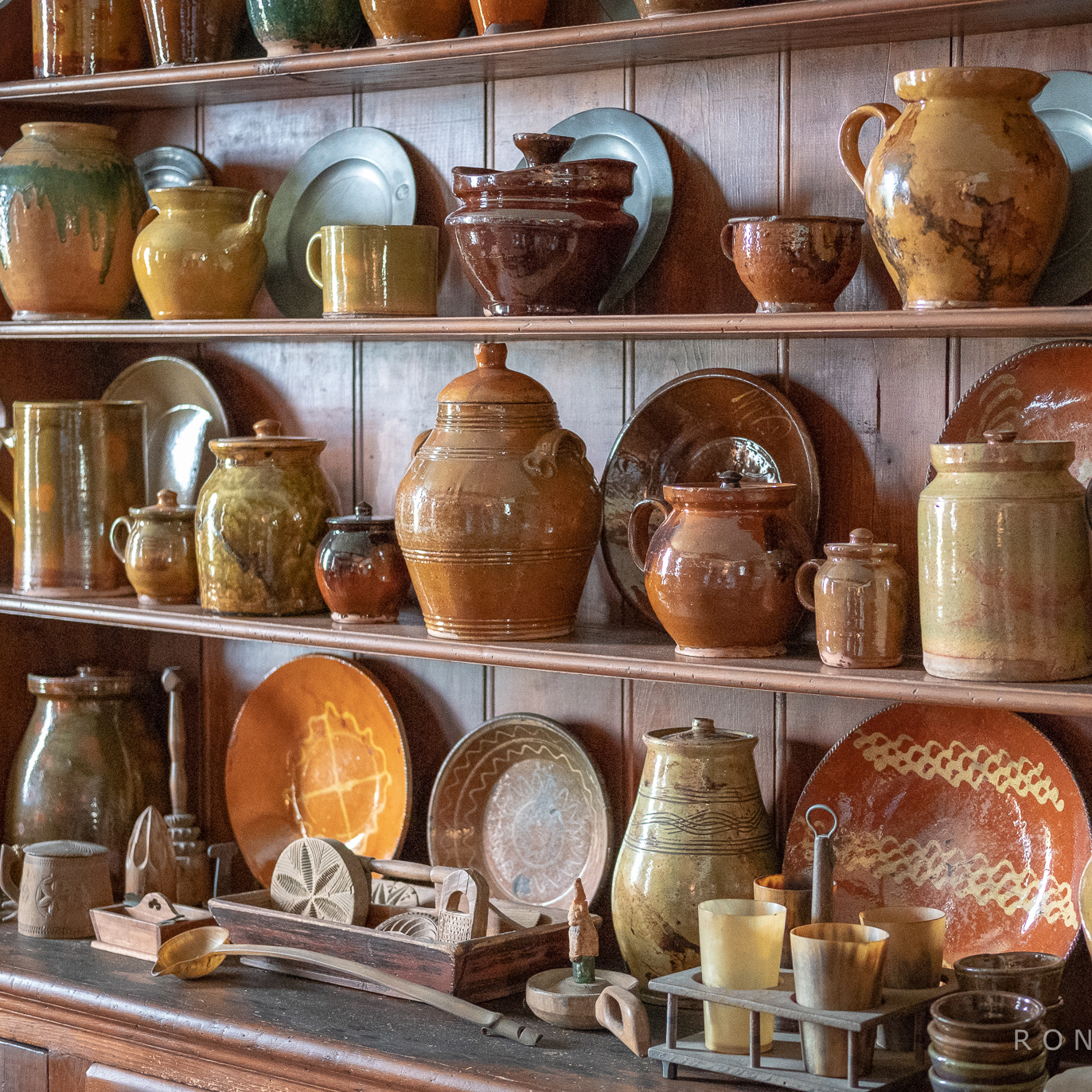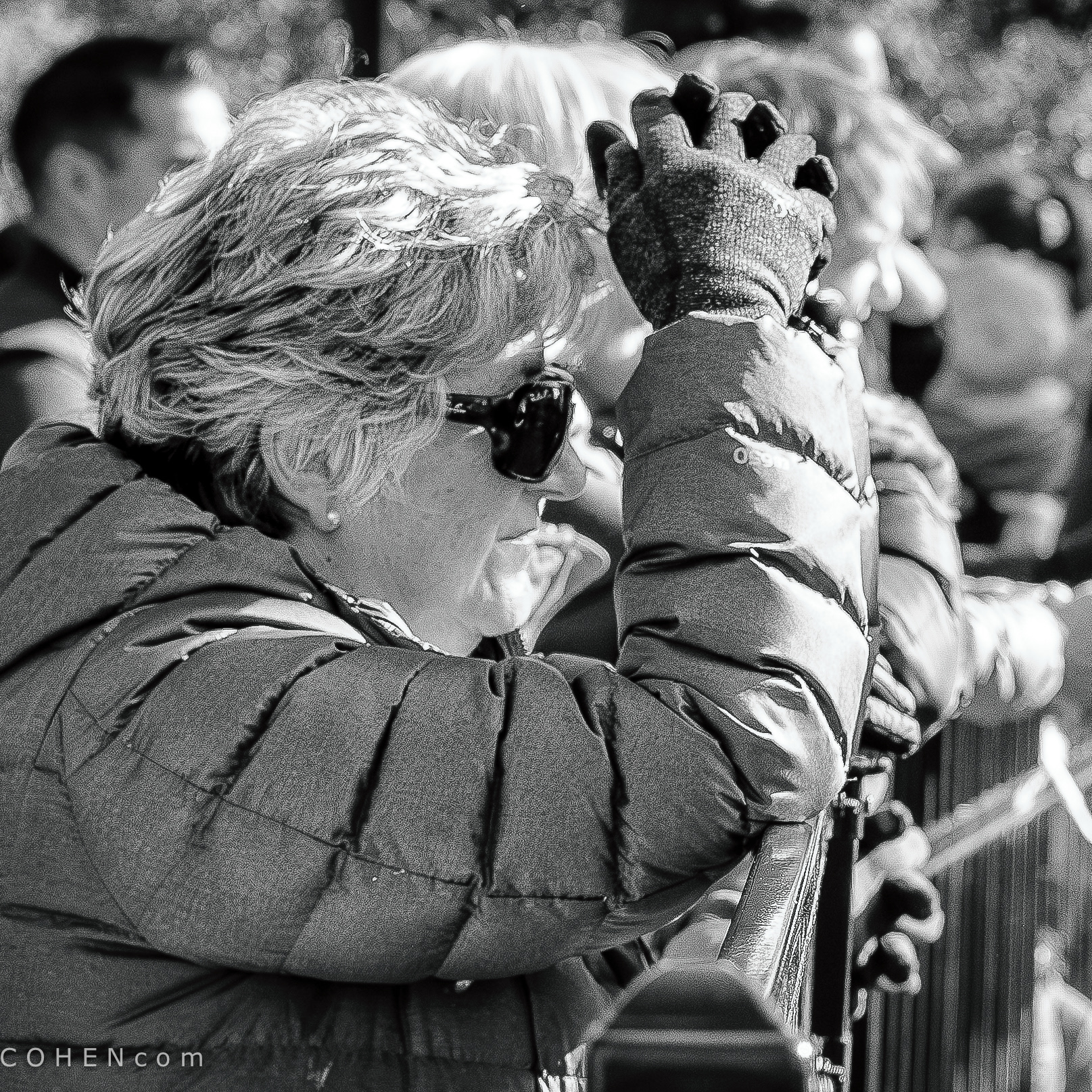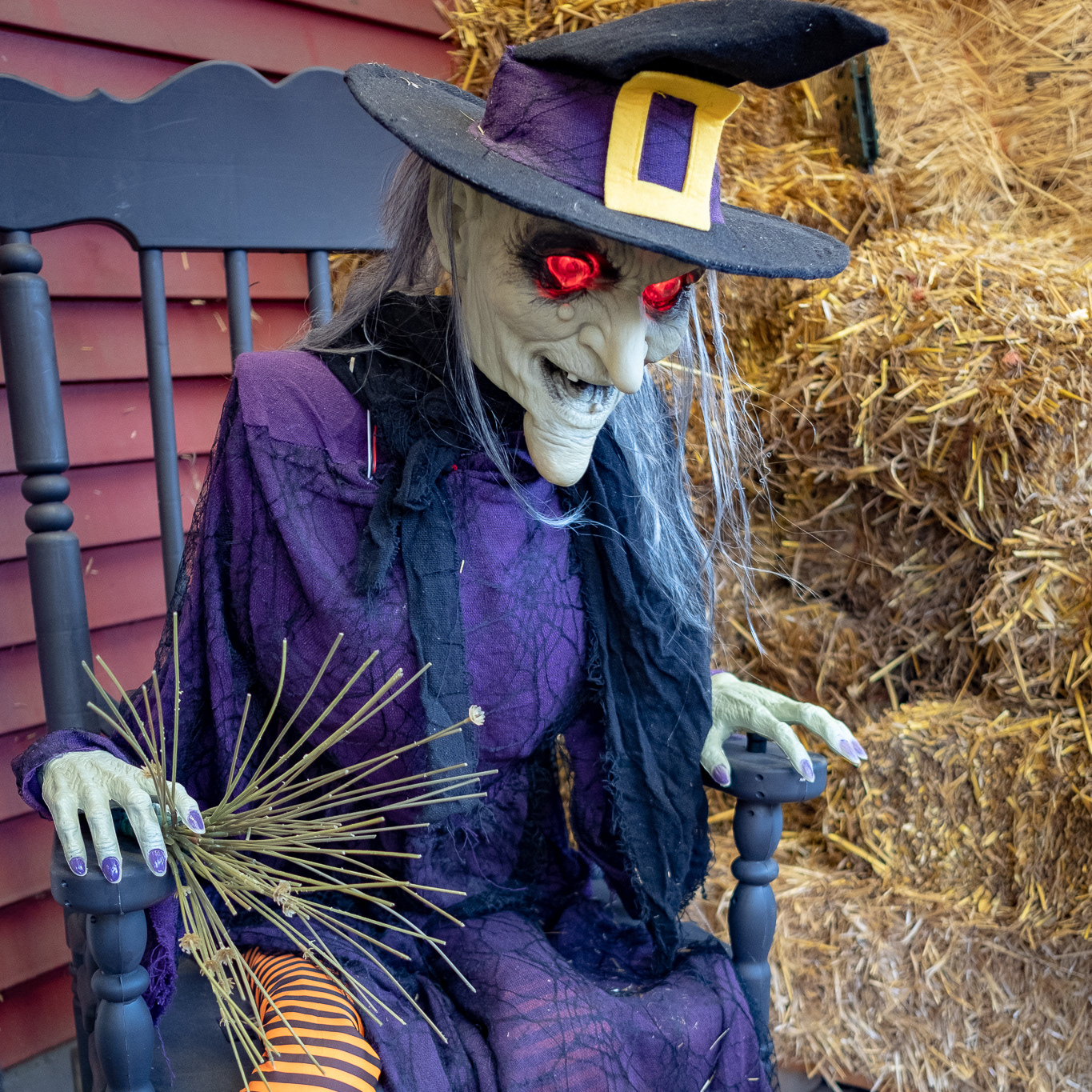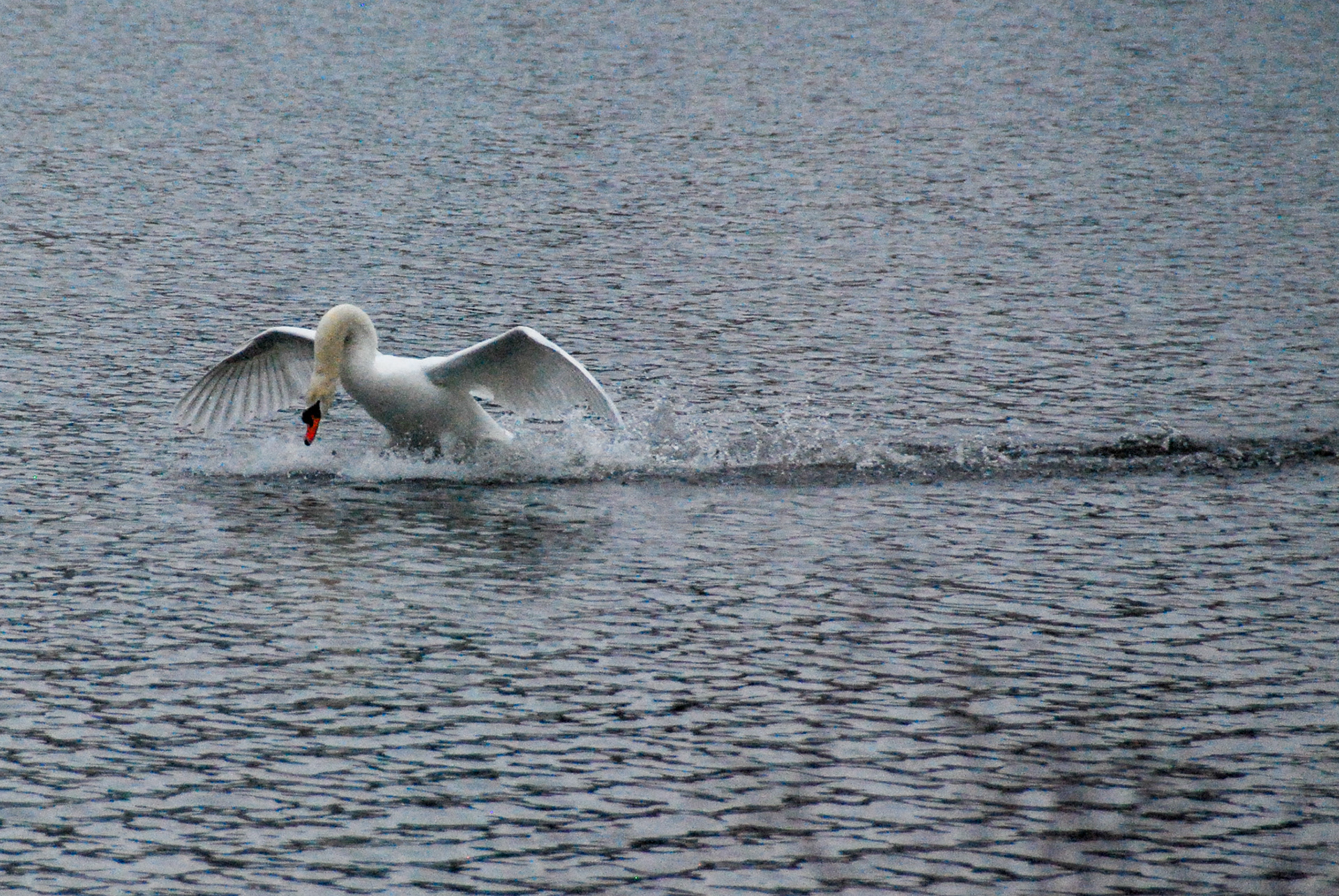
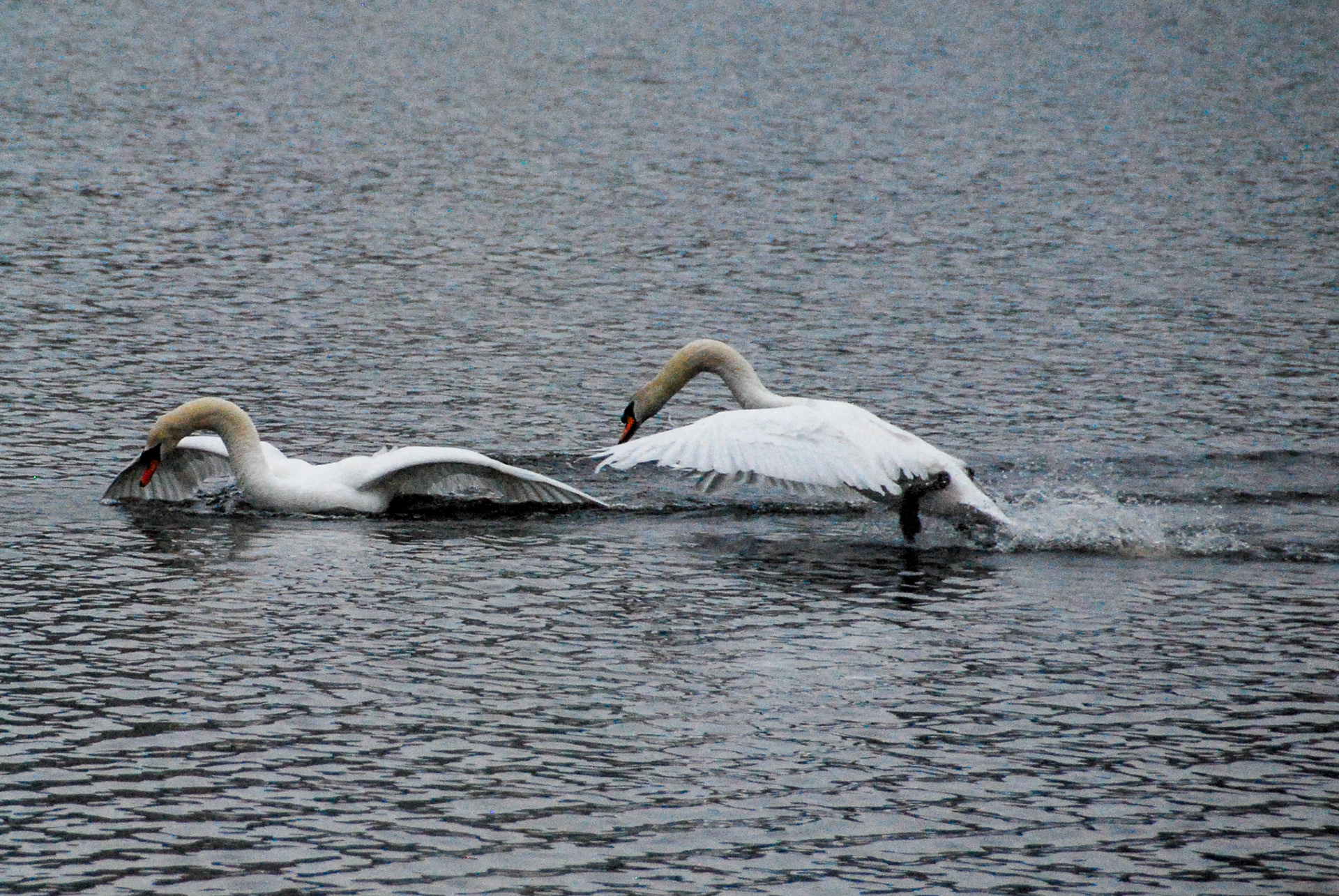
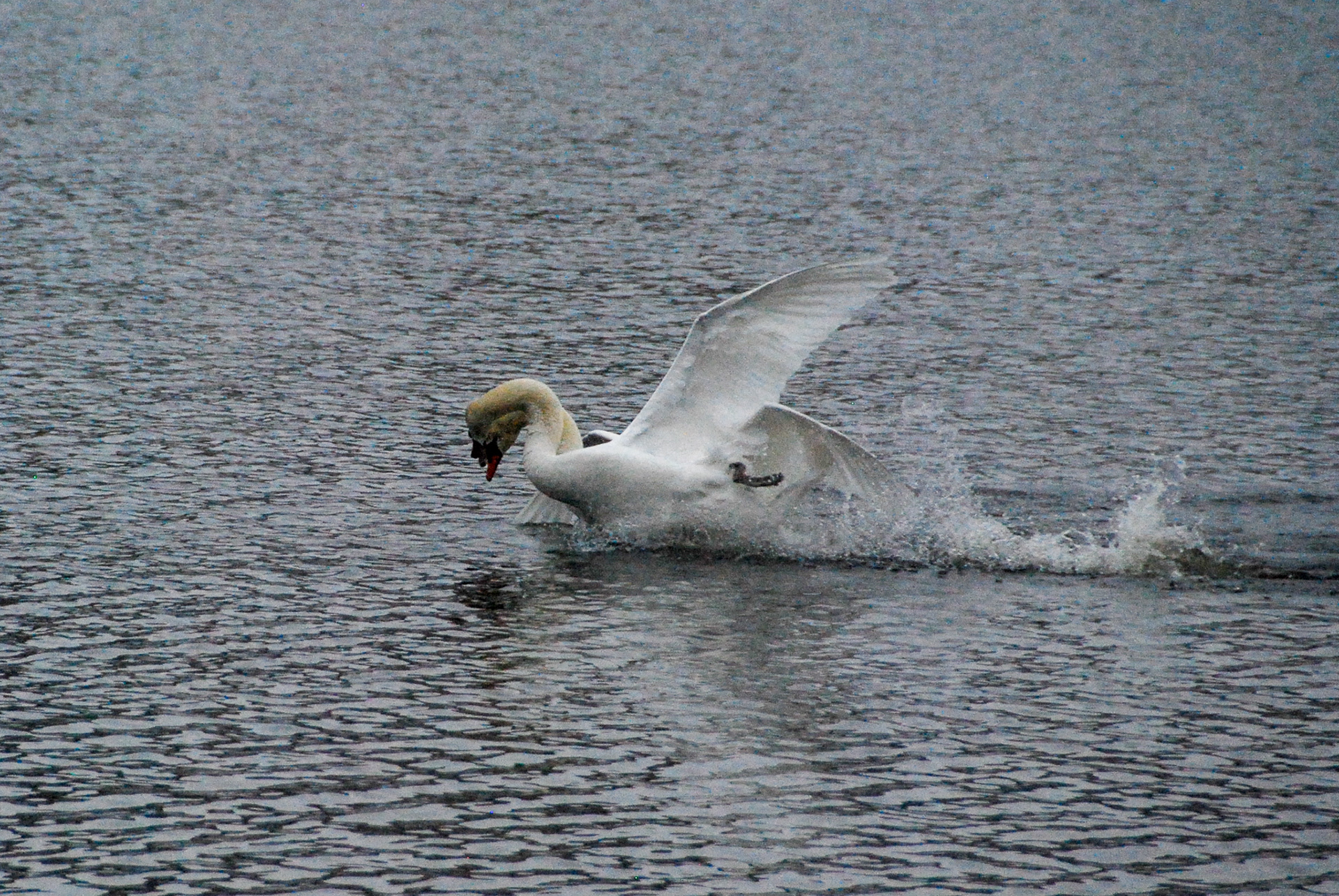
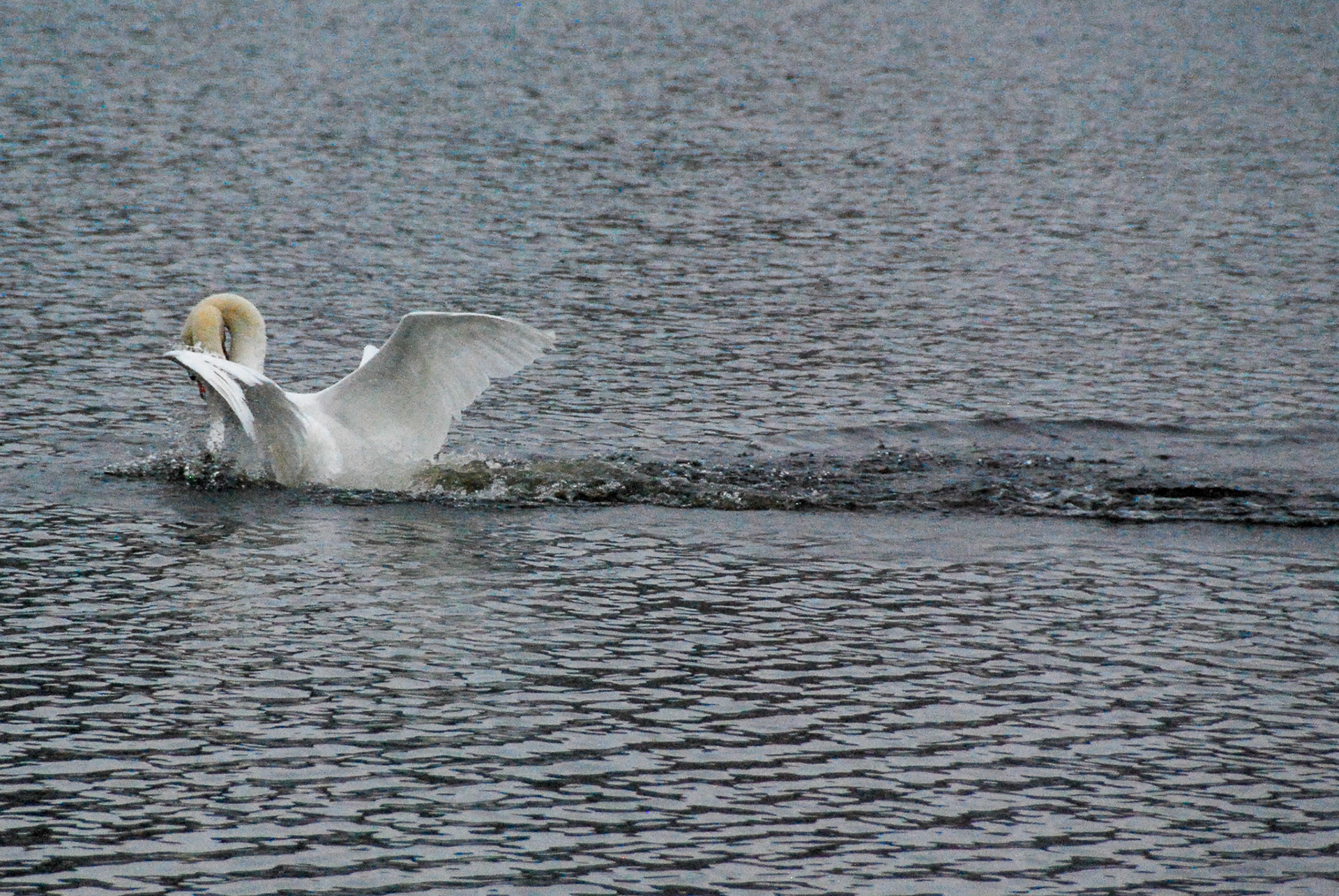
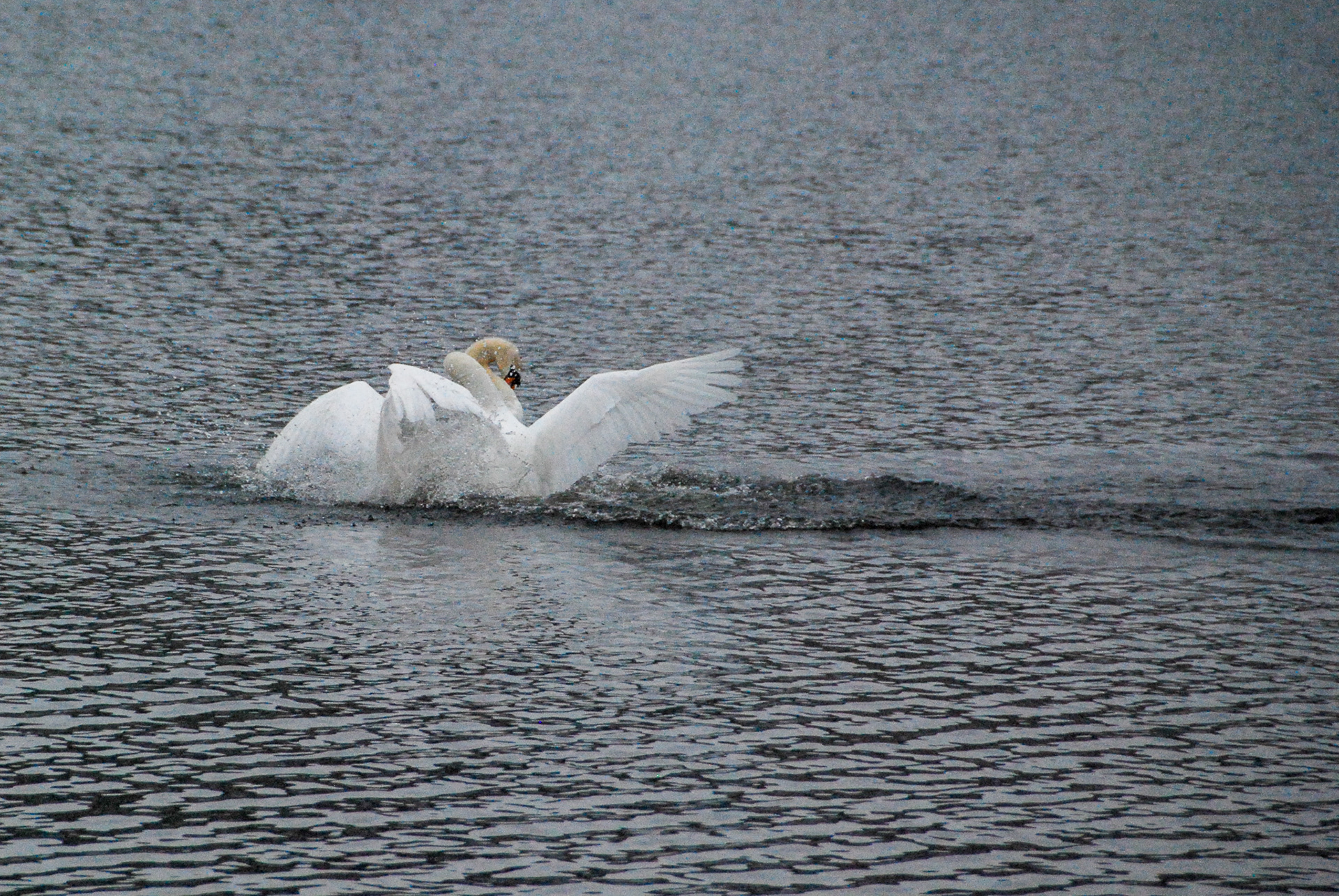
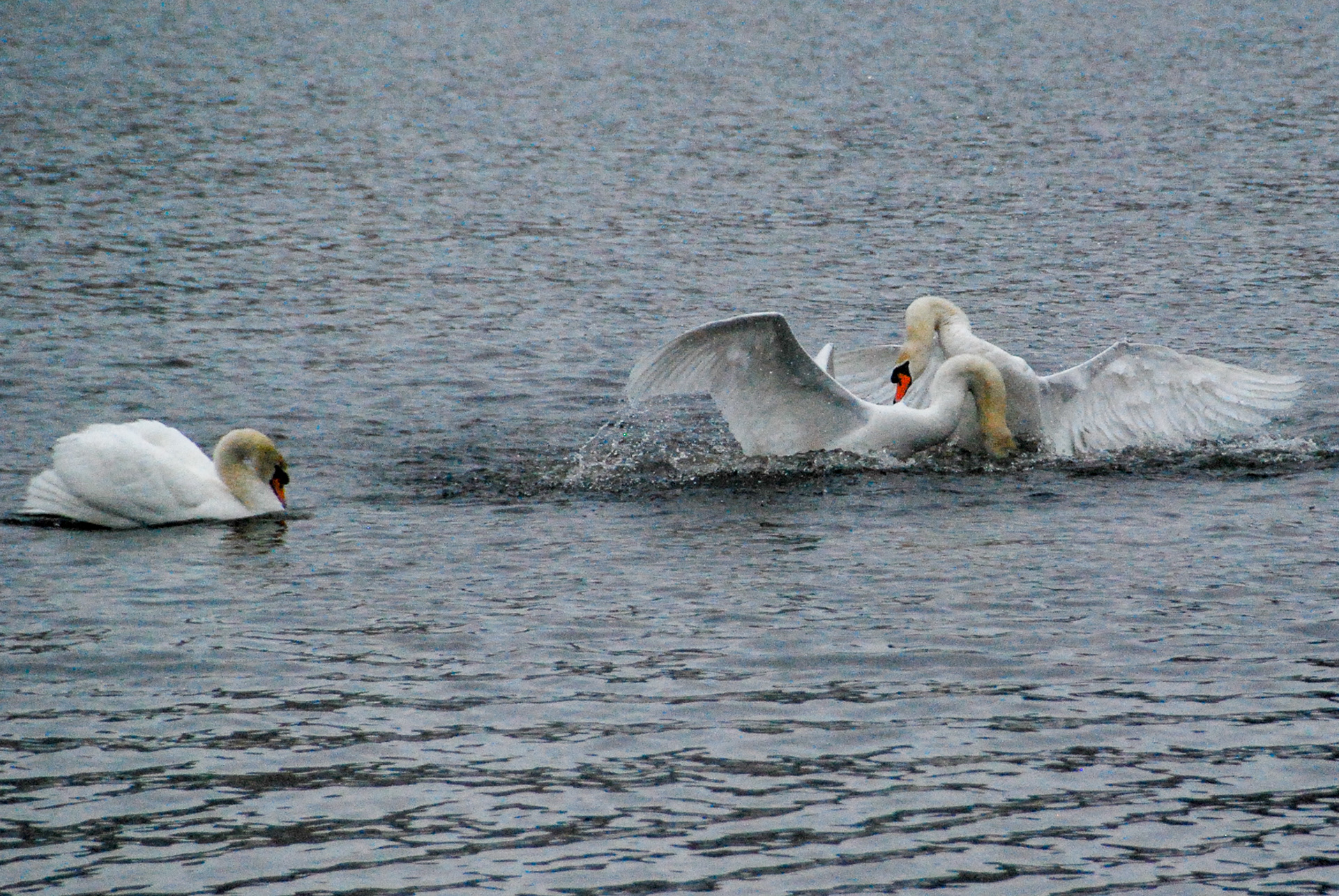
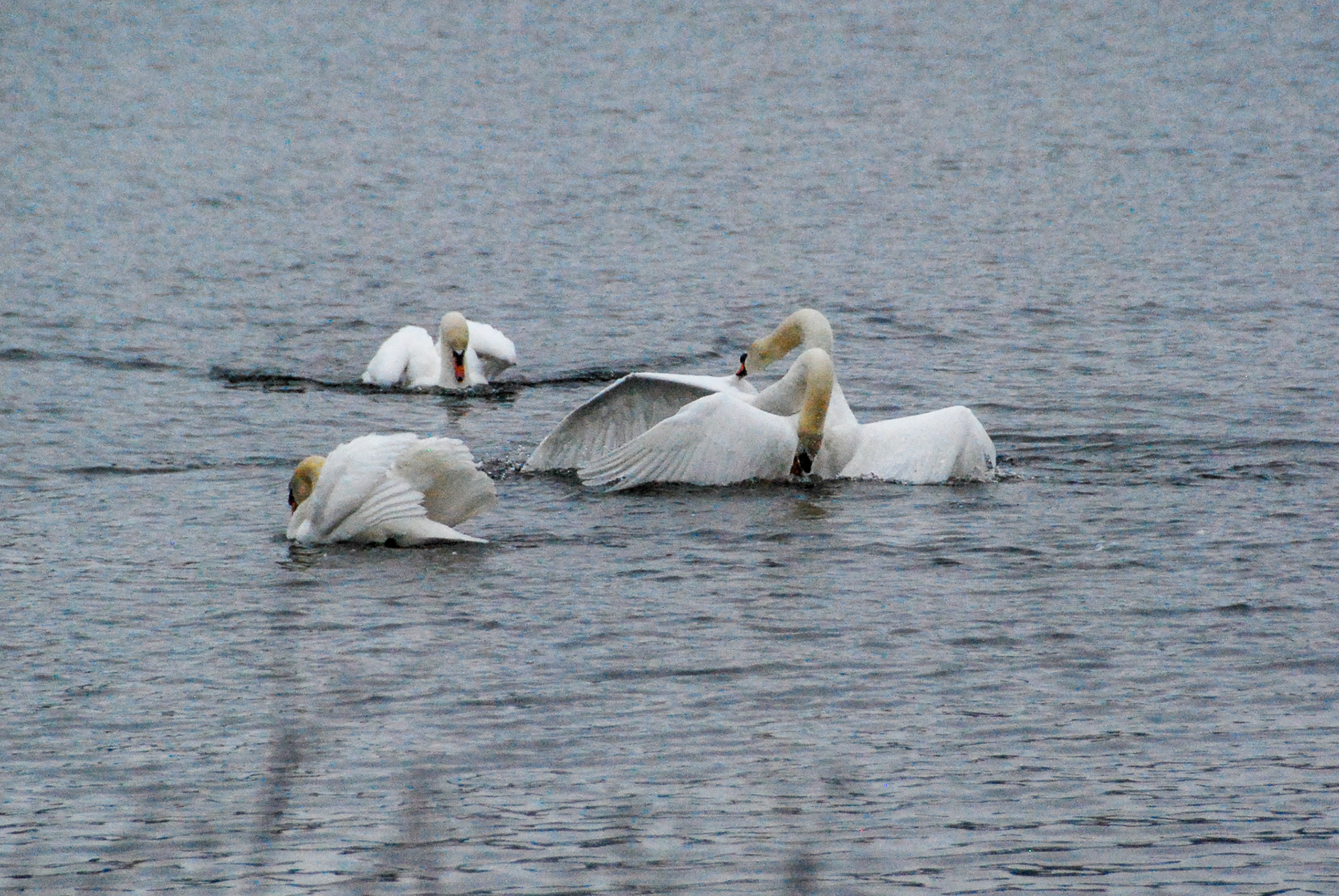
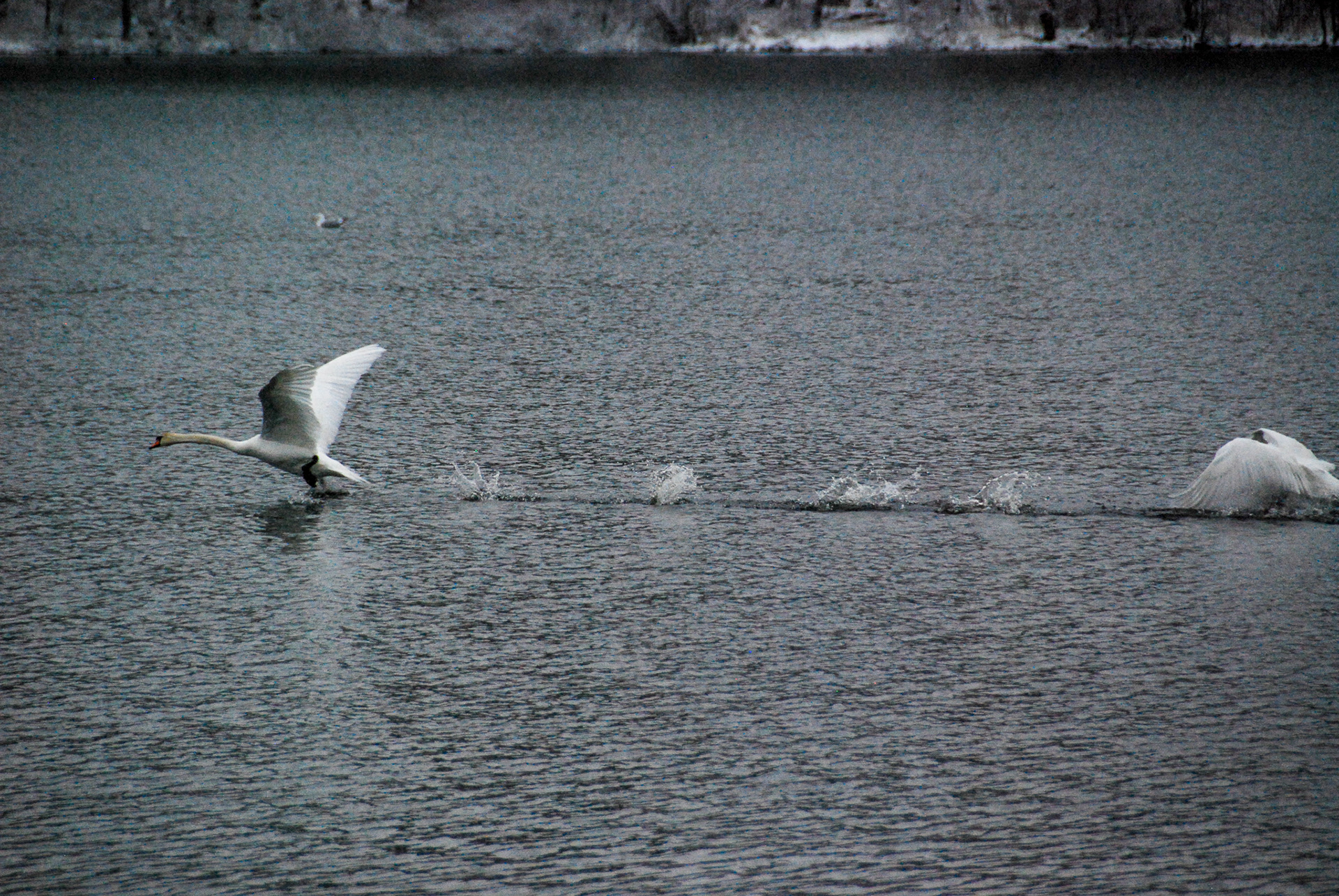
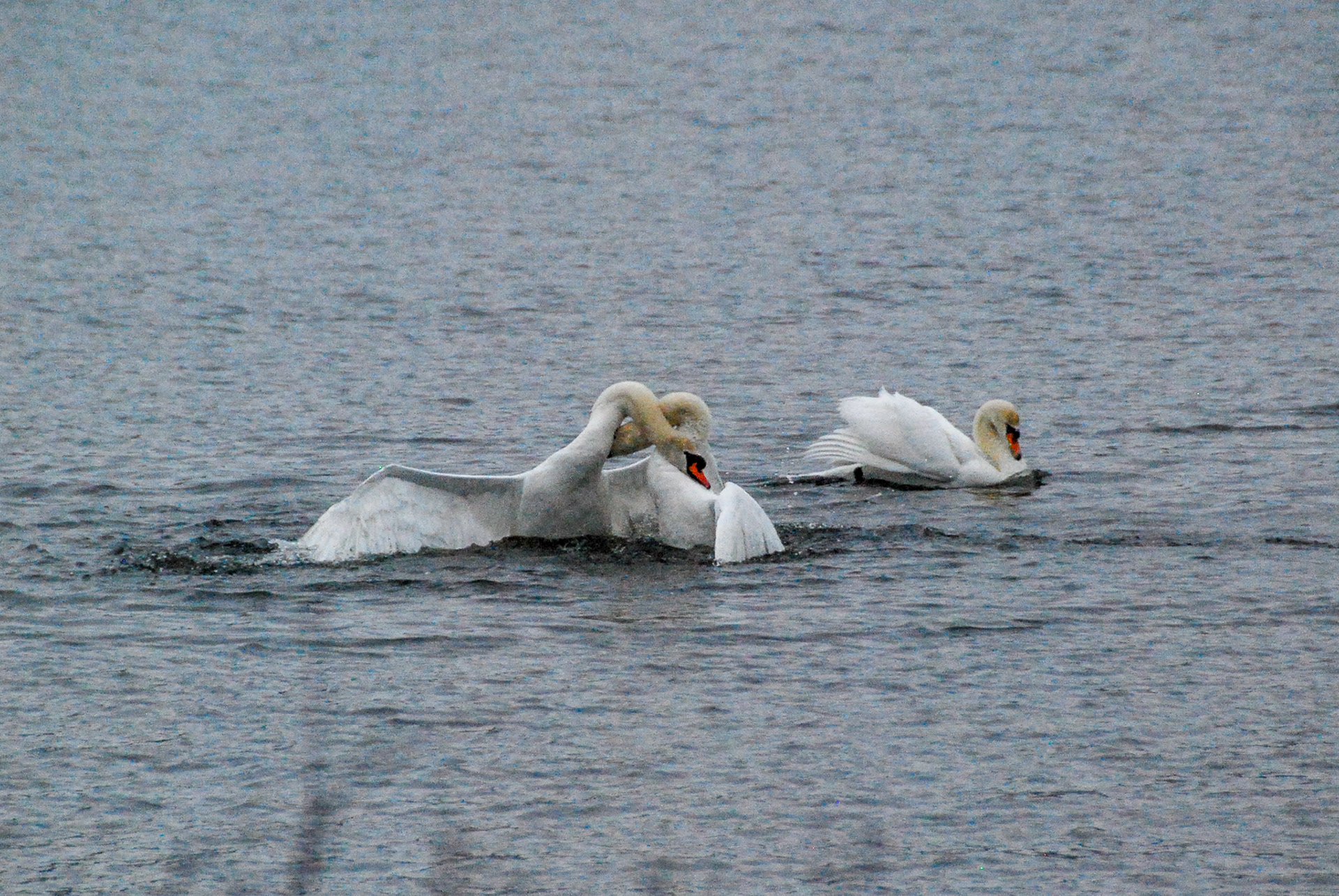
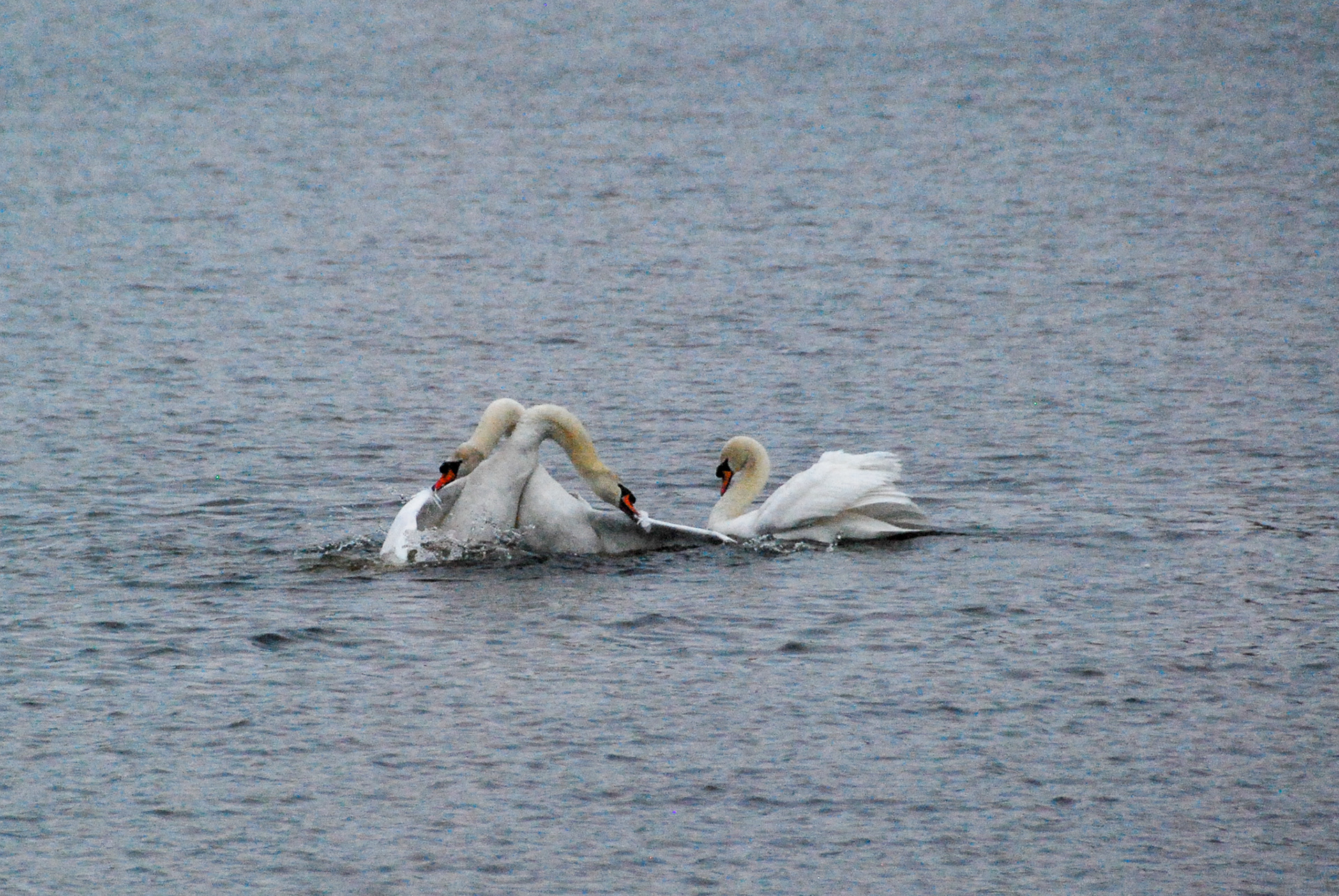
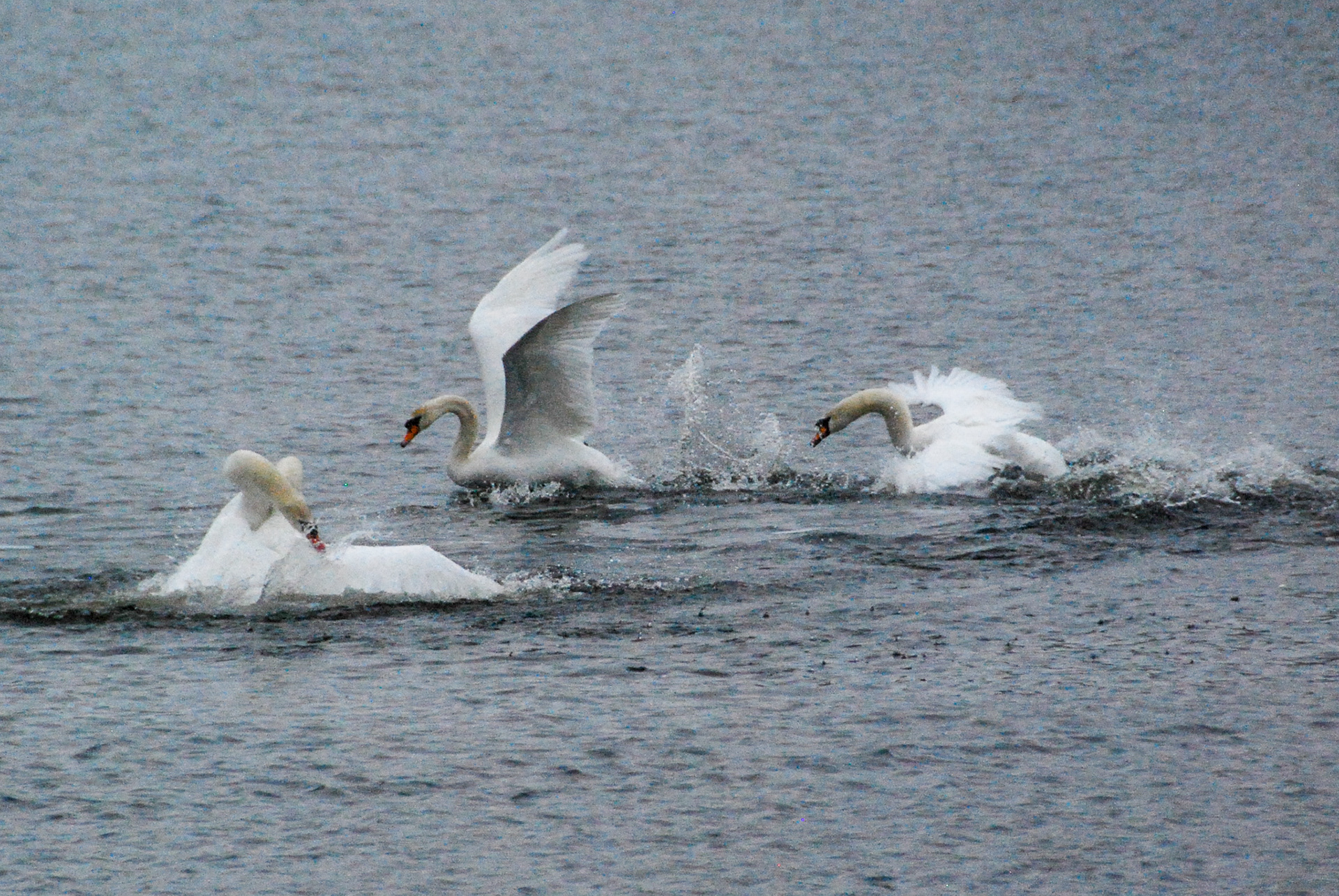
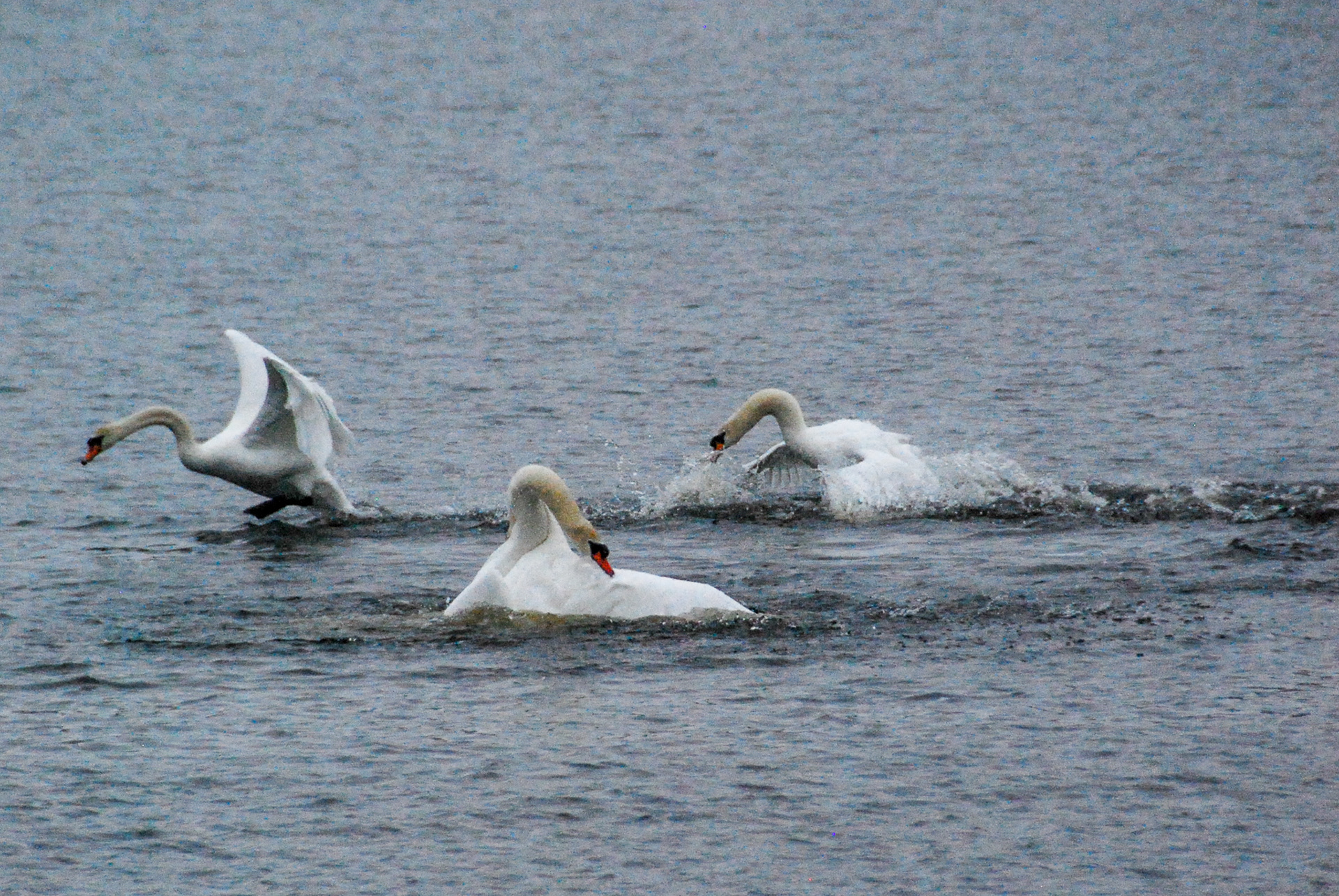
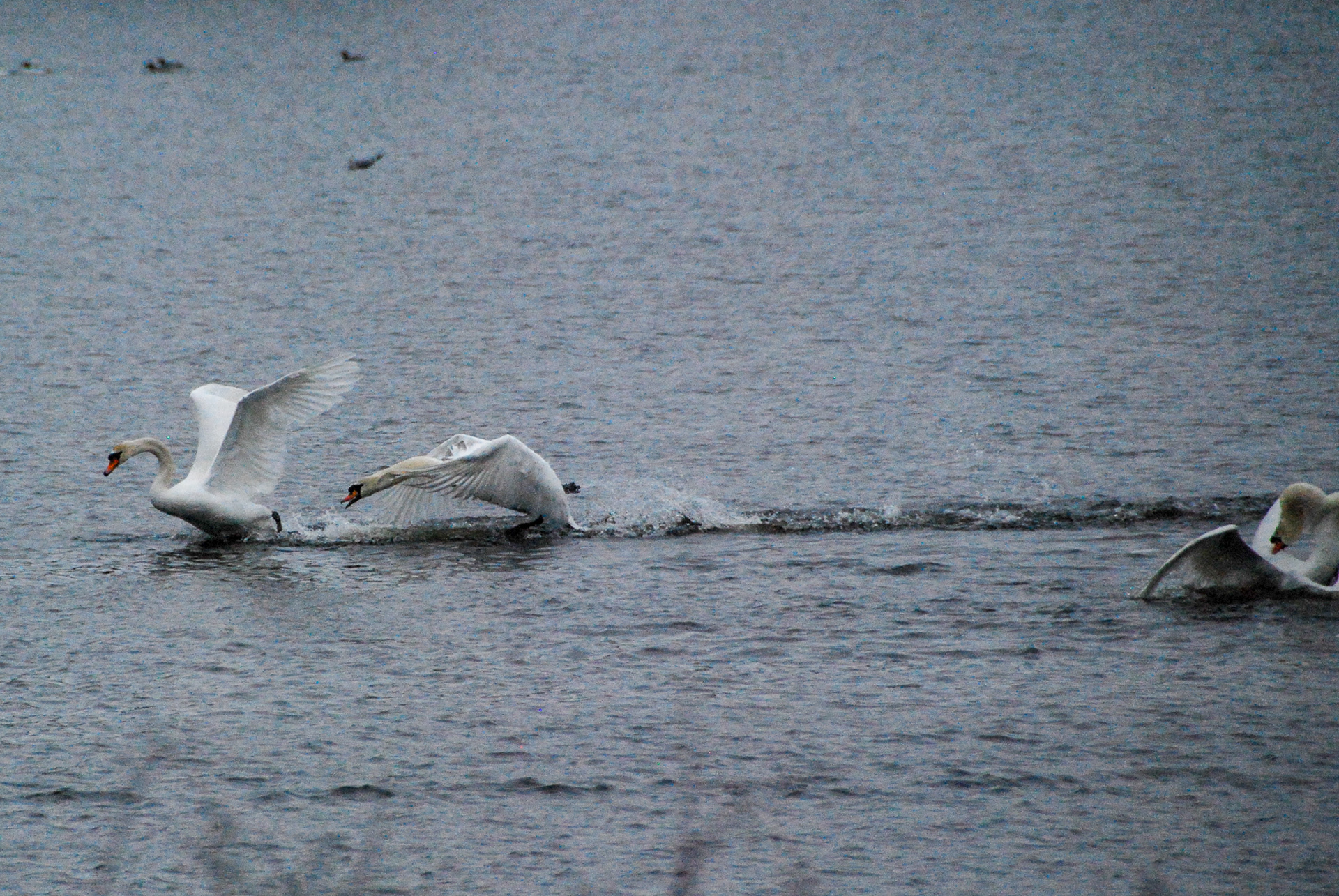
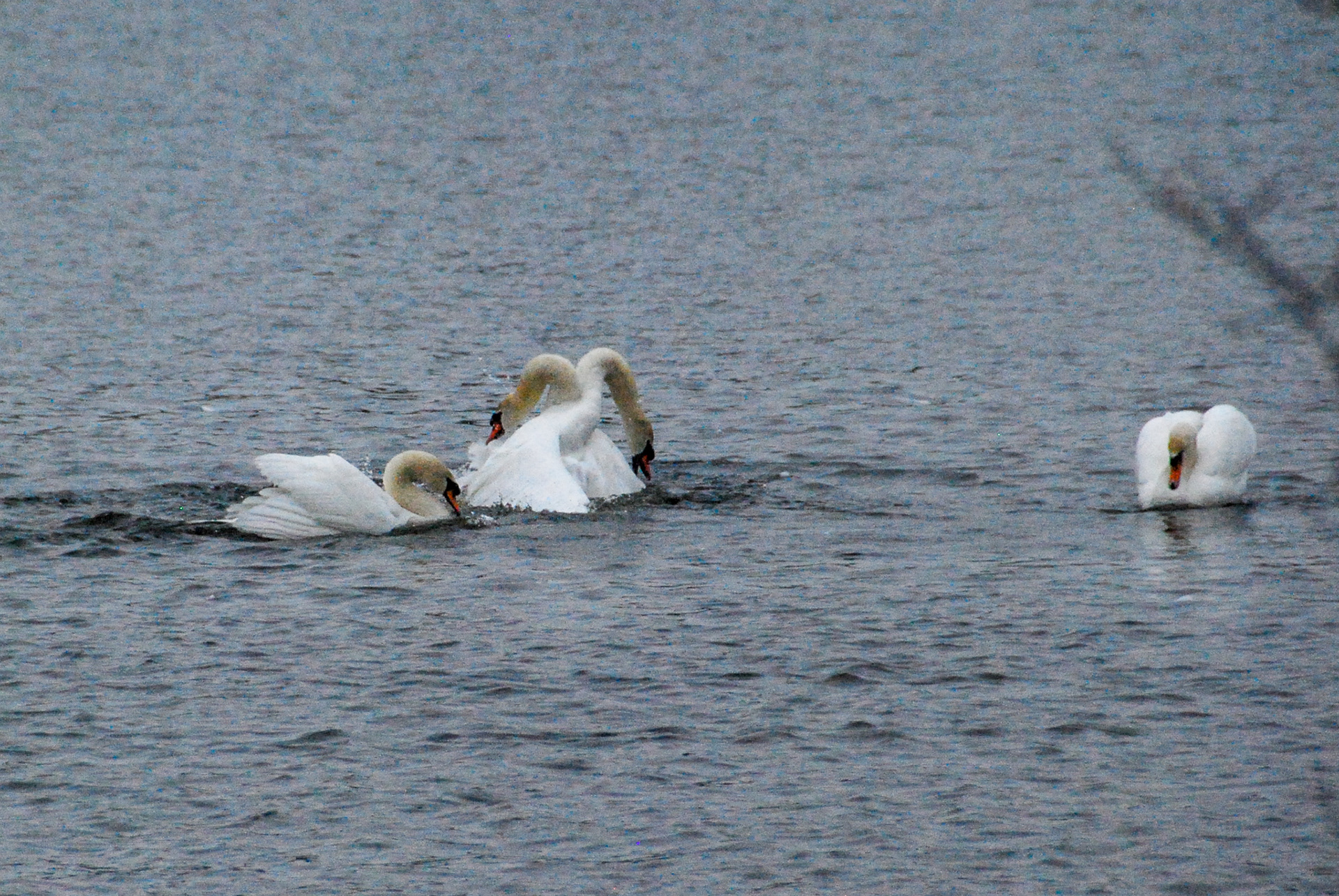
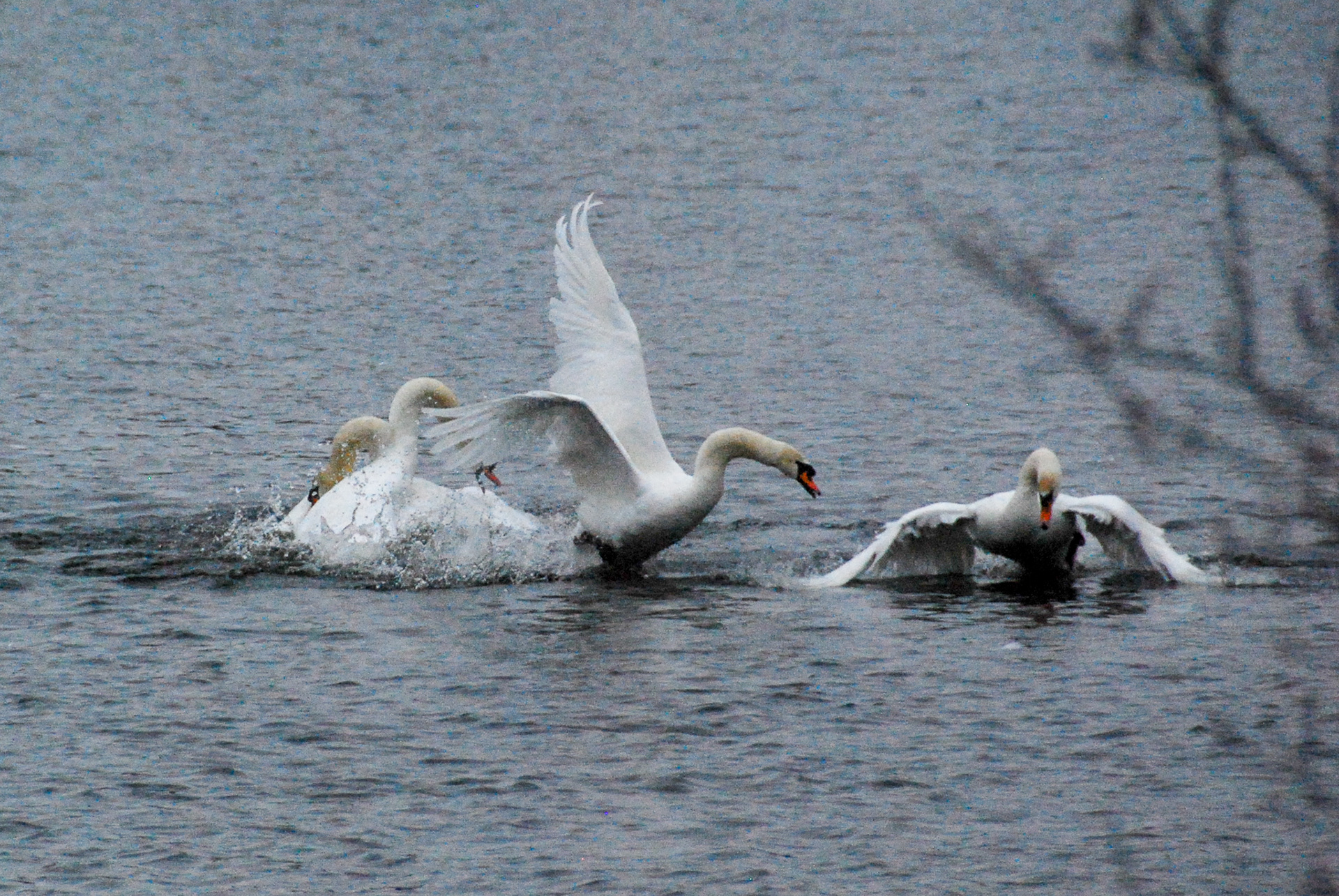
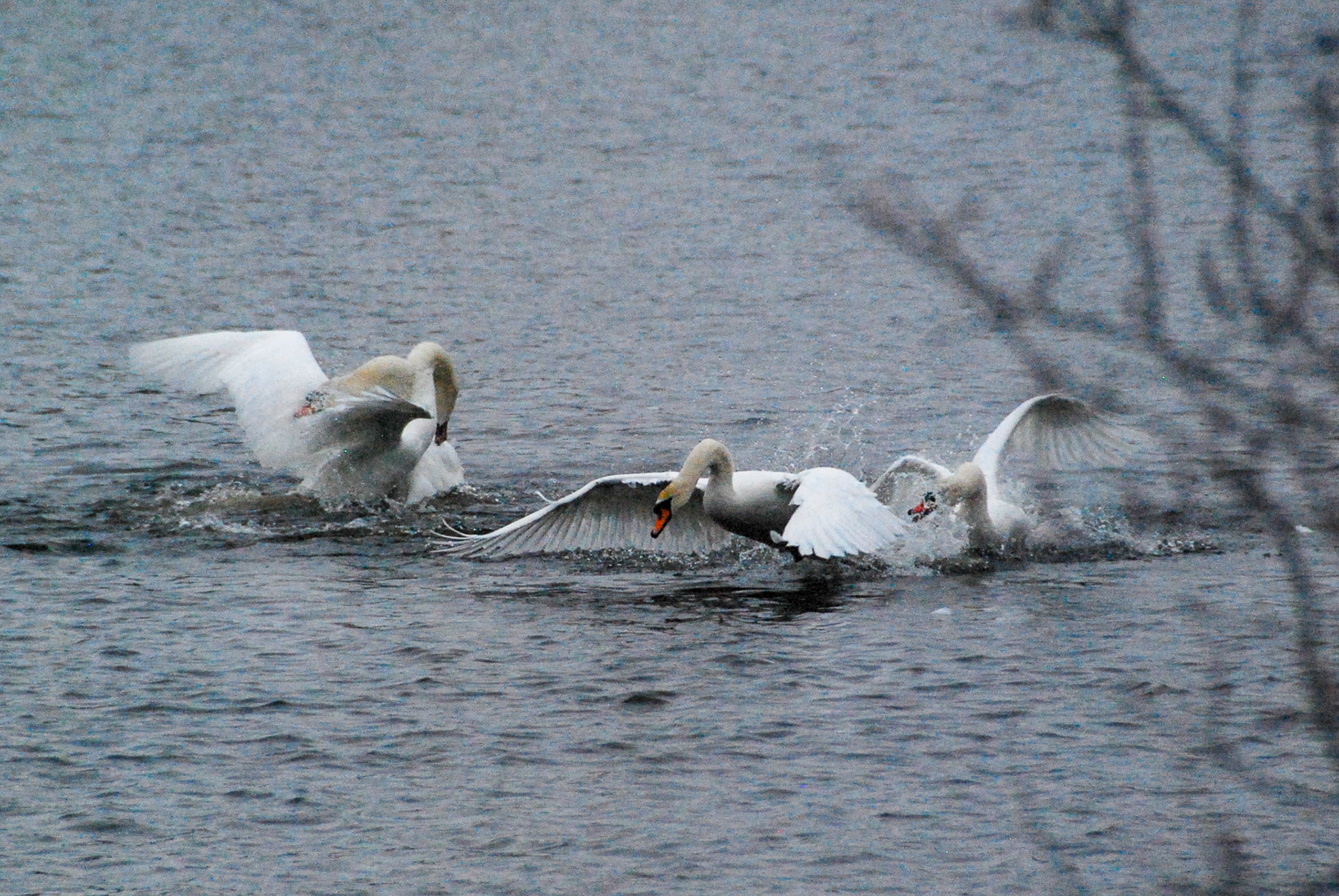
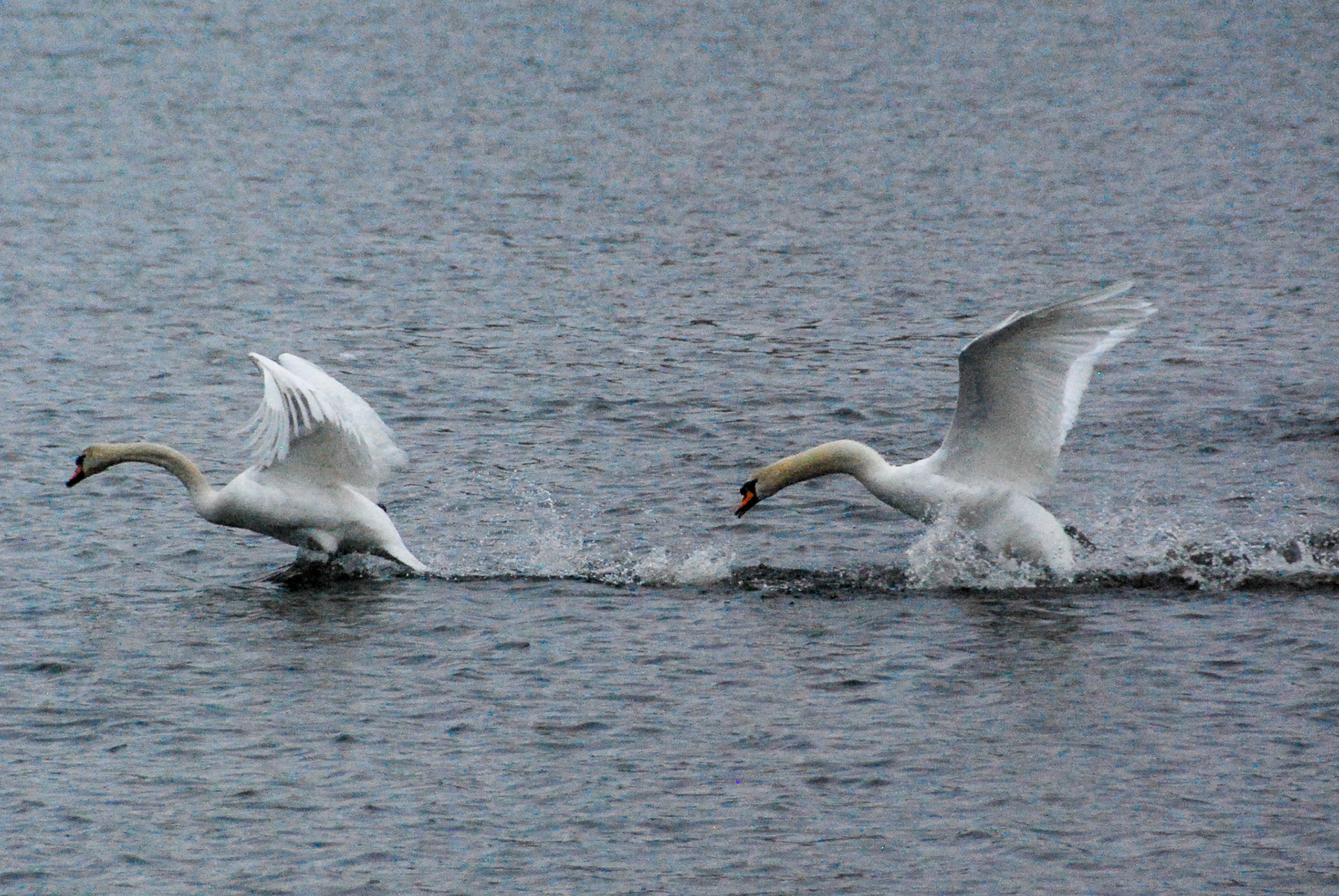
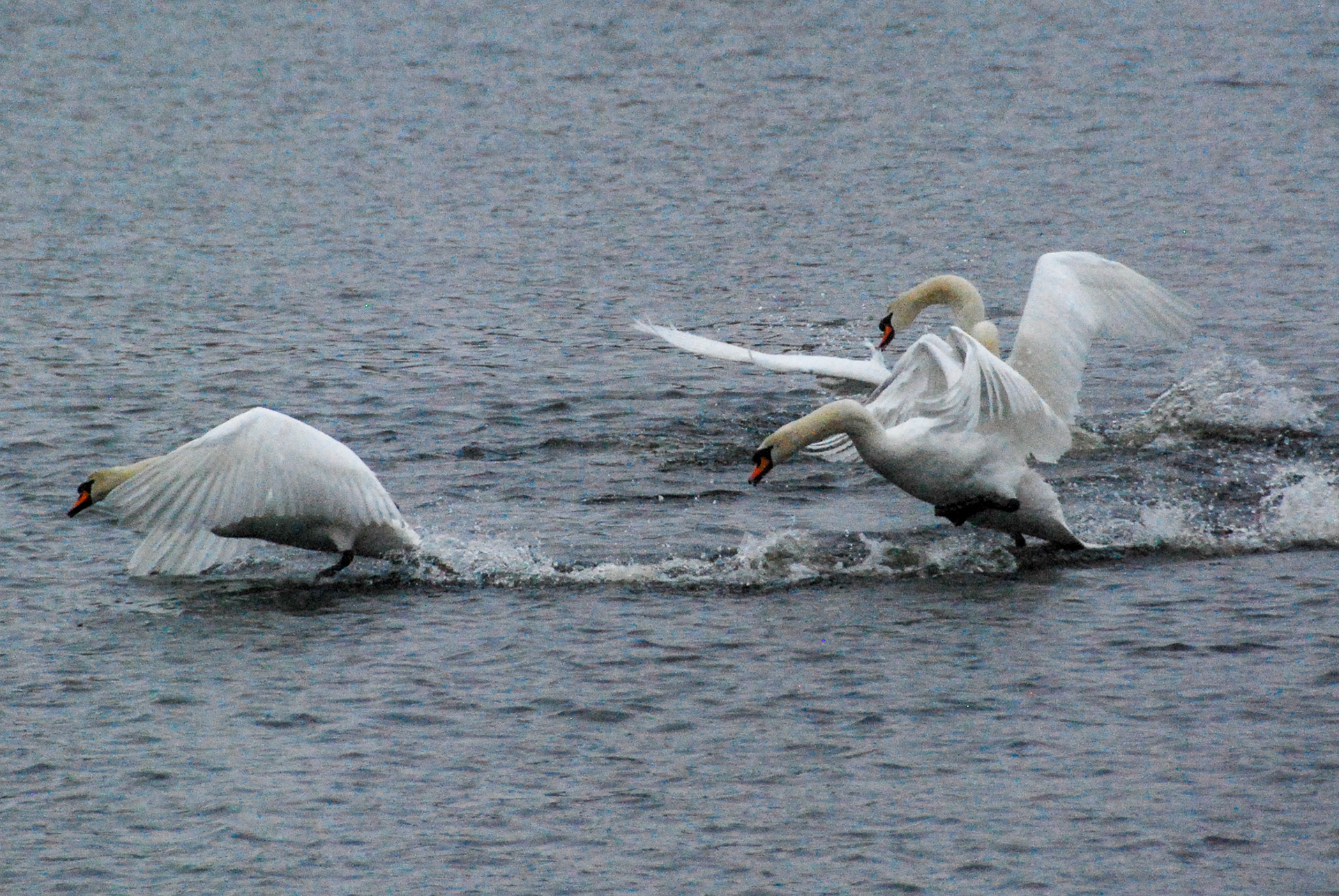
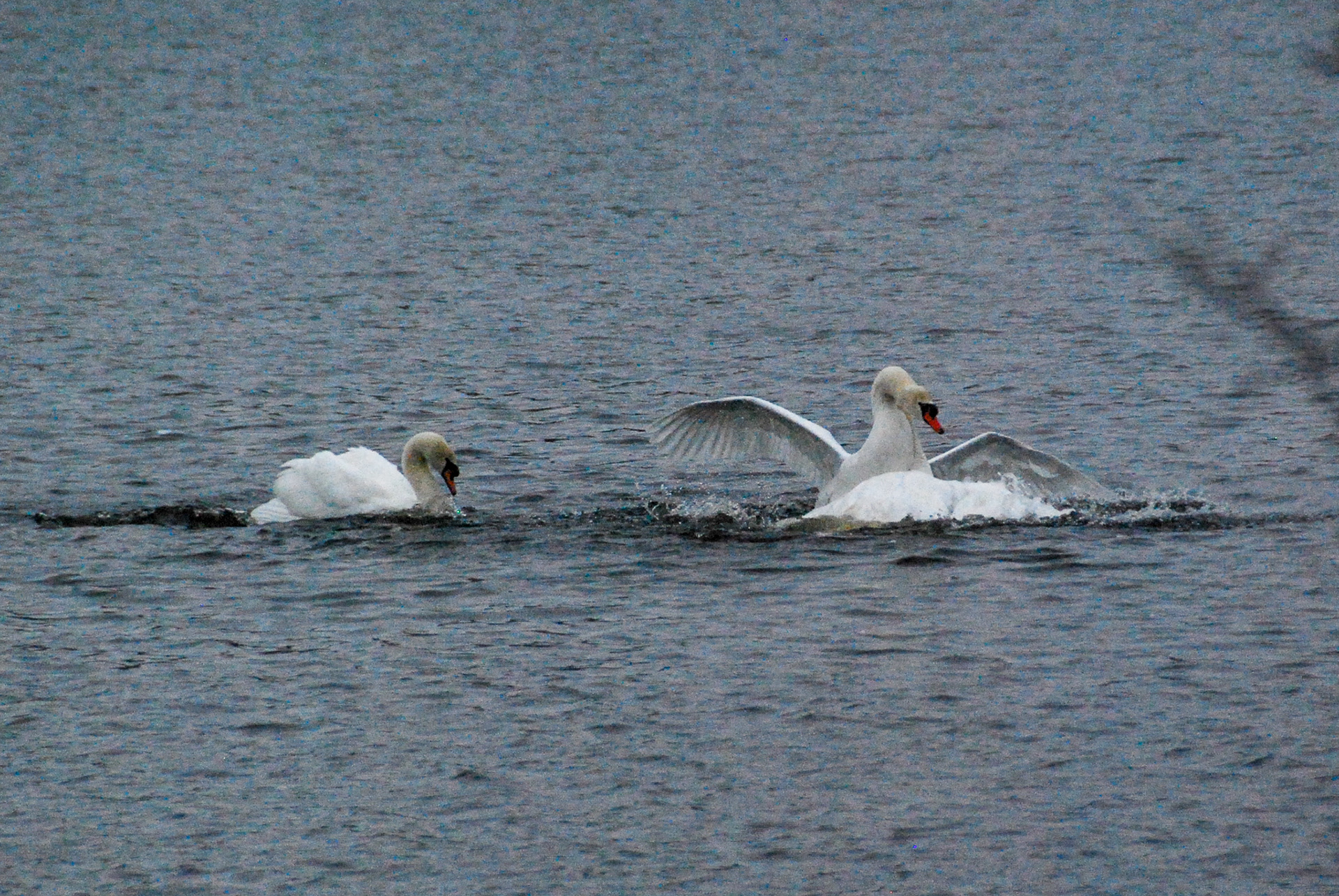
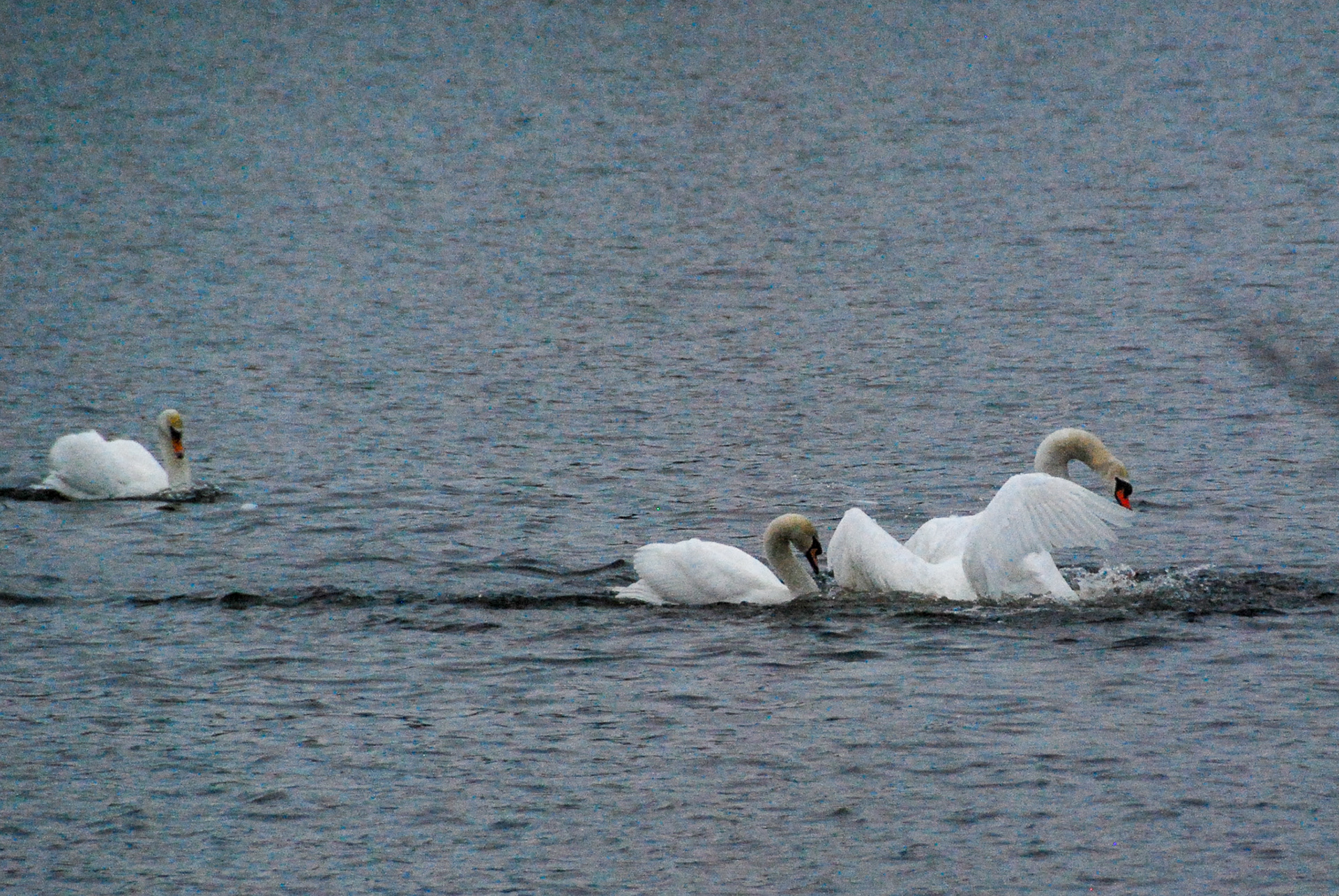
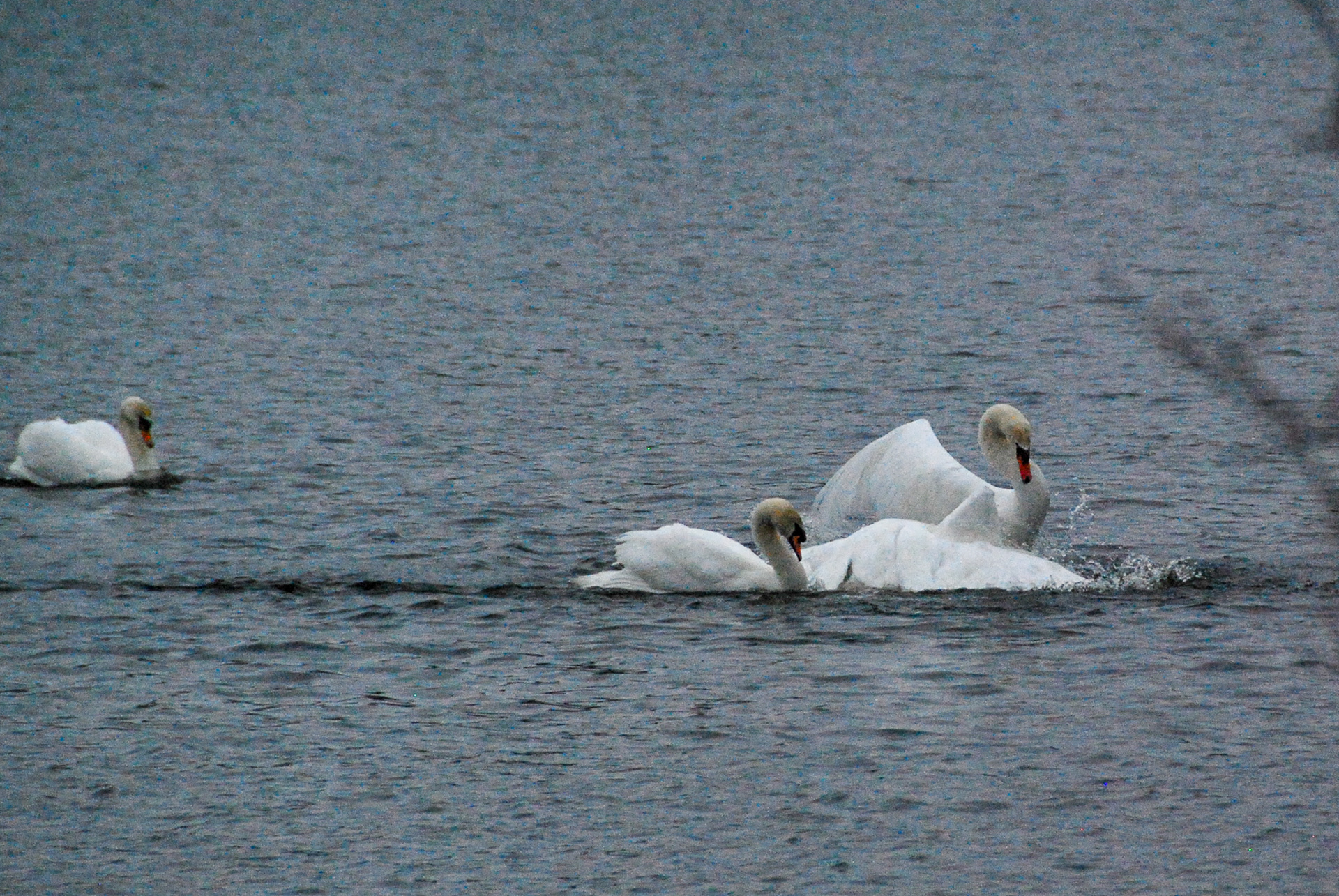
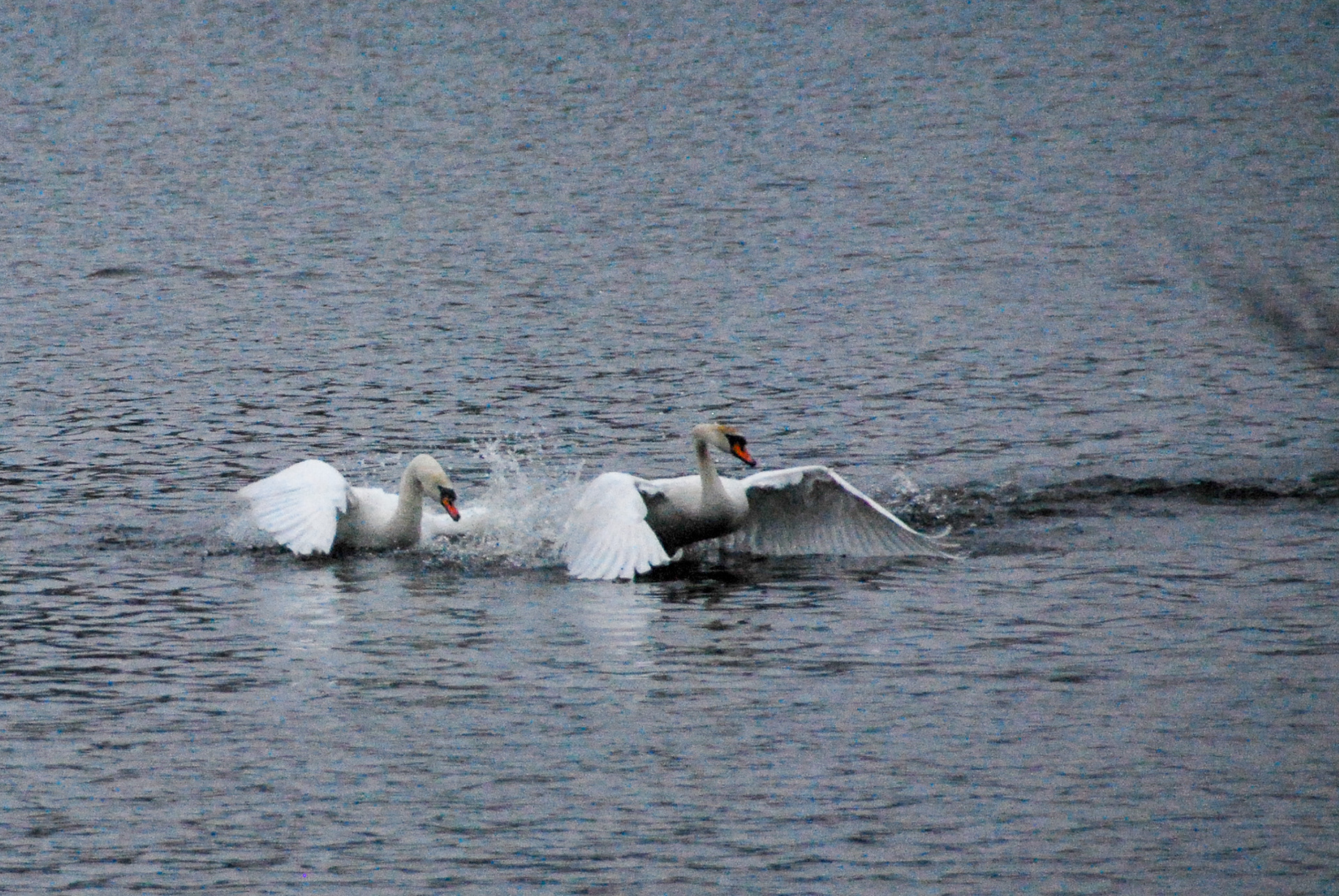
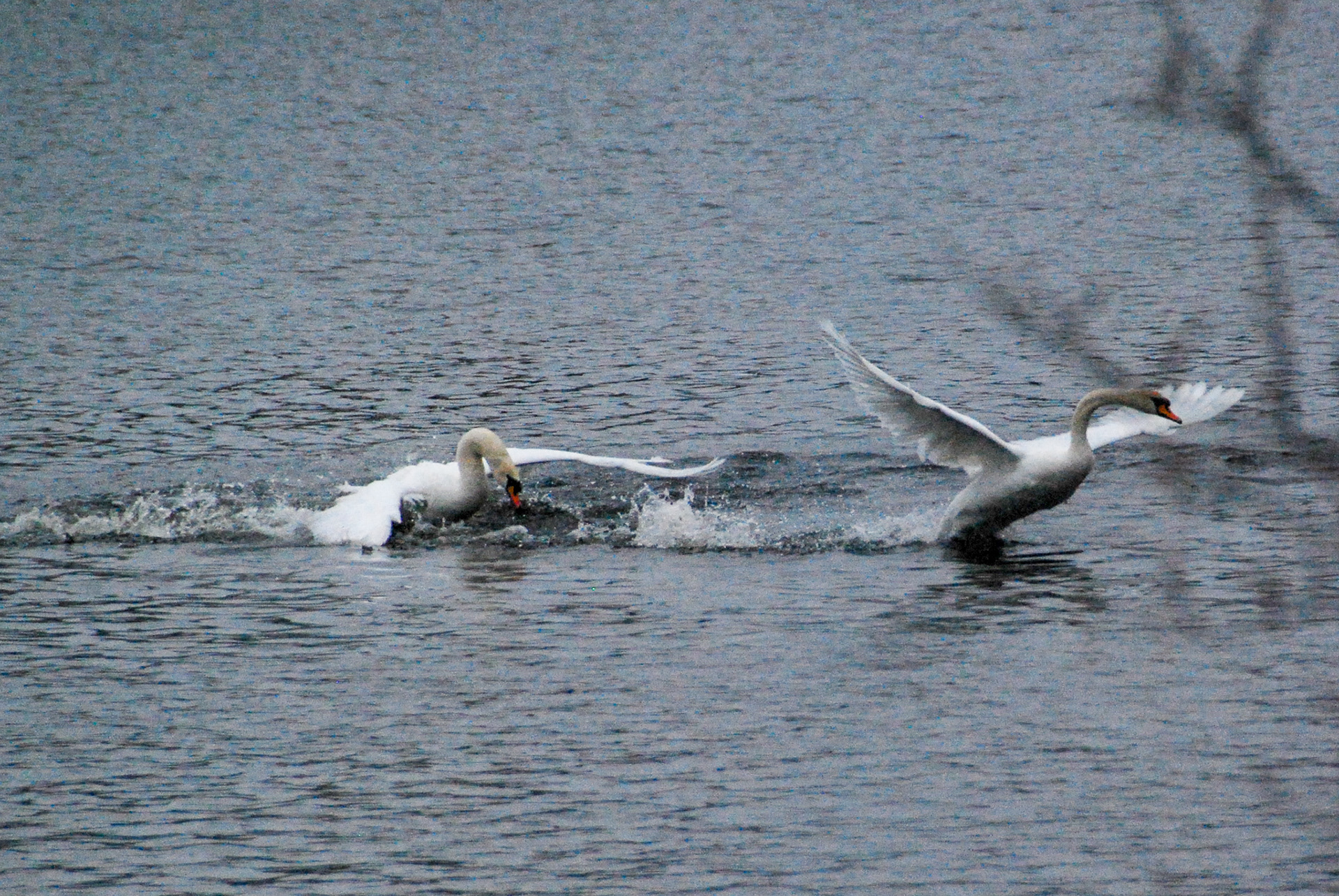

In the last five fight shots, the older, defending male holds the younger interloper underwater until thoroughly subdued, and then releases him. The last frame shows the formal "surrender" ceremony on the opposite bank of the pond, about 1/4 mile away. Hint: look for the necks; towards the end, the defending male’s neck is the thicker. In earlier frames, the defending female chases the interloper female while the males remain locked in combat.
Every now and then, we witness a territorial fight between male swans, with the resident male, or “cob,” defending his turf, or nesting area, against an interloper. Sometimes they fight to a standoff, work out an uneasy truce, and co-exist on the pond. Other times—and this was clearly one of them—the vanquished cob and female “pen” decide that discretion is the better part of valor, and move on.
Early in the winter of 2012, a pair of young mute swans took up residence on the pond, no doubt because it met two conditions: a lack of ice, and the absence of other swans. Their small size and slender necks (photo, below) suggest this cob and pen were no more than two or three years old, and newly mated.
Sometime in mid-February, however, the day of reckoning came. After several months absence, the real residents returned from their usual winter haunt at an unfrozen river or estuary, nearby. Older, bigger and more experienced, they evicted the young ’uns after a fierce fight.
It’s always hard to be sure of anything about swans, but sometimes a small insight can finally shed light on a big mystery. Hours after the fight, the older swans came by in what I took to be their victory lap. They were completely at ease—serene, is a better word—showing none of the curiosity and excitability I associate with swans new to the pond. Suddenly all became clear: they had been here before; this was home, and they were the defenders.
Sure enough, looking at the fight sequence again, I realized it was the bigger, older swans on the attack, defending their nesting area. Initially, I had trouble telling the defending cob and the interloper apart, because both had their neck feathers up—a sign of aggression. The younger pen gave me the clue: her youthful, slender neck was plain to see, and she was being chased by the older pen, with a thicker, adult neck. I also understood the pens’ role more clearly: while the two cobs were locked in combat, the two pens can be seen, frame after frame, either circling helplessly or busying themselves in the chase.
I find swan fights horrific. I watched this one for about six minutes, before the action moved out of sight behind a neighbor’s hedge. Those six minutes seemed like an hour. I was so agitated by the violence in front of me, that I forgot to check my camera settings. As a result, all the shots came out too dark. Fortunately, I was able to lighten them digitally, but it left them grainy, reminding me of old film photos that I had “pushed” too hard in the darkroom. Perhaps this graininess serves a purpose, though unintended, of heightening the sense of foreboding conveyed by the photos.
The slide show contains twenty-four shots. Some viewers may find it overly long and repetitive, but I feel its very length conveys the intensity of the fight, as well as the determination and endurance of the combatants. I shot the sequence from my window in the early morning of February 18, 2012.
At the end, the victor forced his opponent into submission by holding him underwater. Rarely do injuries or fatalities result from these fights, as fierce as they may be (although there was a reported killing here of one cob by another in 2006, the killer being known by locals as unusually vicious). Less than an hour after the fight, far across the pond, to my great relief, I saw both combatants preening themselves, a sign that all was well.
A few minutes later, using binoculars, I watched a remarkable scene unfold on the opposite shore. The younger cob had climbed up to join the two older ones on land for a symbolic “surrender” ceremony. With neck sleeked, wings flat on his back, and bill pointing down, he was offering the classic signs of swan submission. The photo—the last one in the sequence—is fuzzy because of the great distance, almost a quarter mile, but it is dramatic nonetheless.
Occasionally, more than one “interloper” pair has appeared on the pond at the same time. In such cases, there are usually no fights, just frantic chases on the water and in the air, before the resident pair finally reassert control.
Every few years, during migration season, a vast gathering of unmated swans will take place on the pond. I’ve seen as many as fifty on the pond at once. Some writers refer to these as “winter flocks,” but the swans come and leave a few at a time, so they are flocks unlike any that we know. I believe their purpose is to help young swans find mates. During these multi-day events, there are no fights, because there are no territories, and there are no territories because there are no nesting pairs—yet.
I hope you enjoy this project (if that is the right word). I regard it as one of my best documentary efforts, for its focus on a subject that has been little studied or recorded.
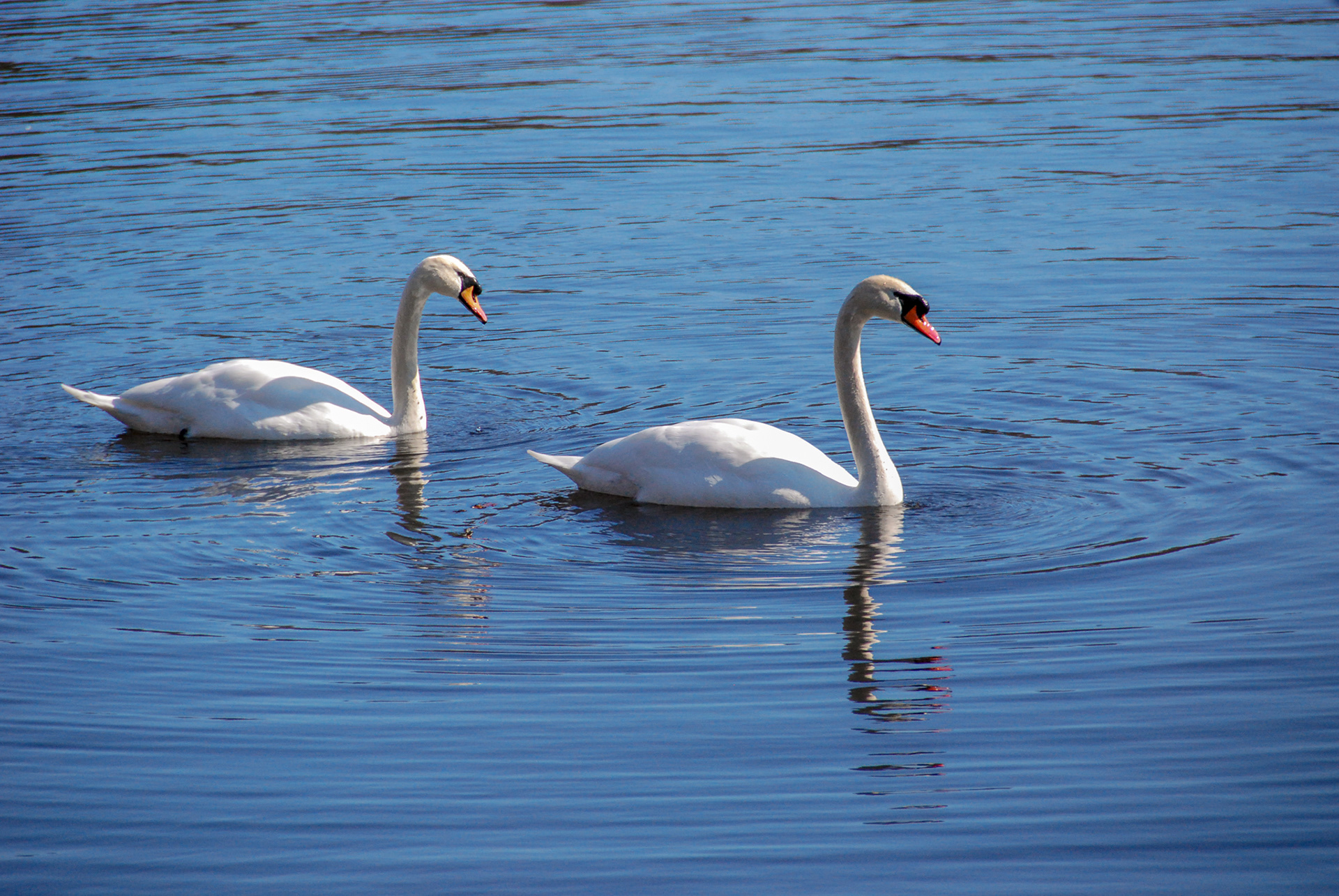
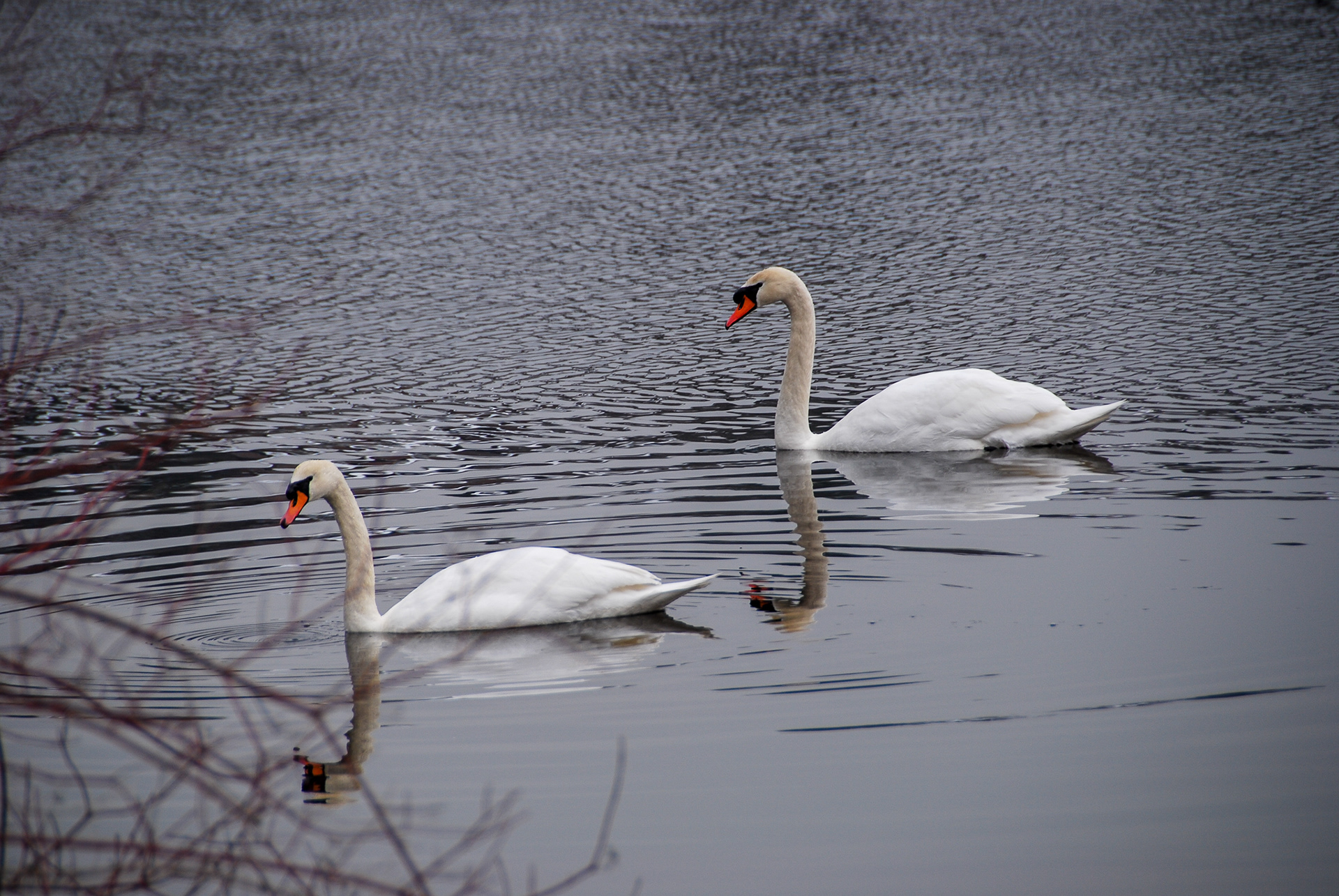
At left, the young interlopers shortly before the fight. Note their slender necks, a sign of tender age. At right, the older defenders surveying their domain several weeks later.
